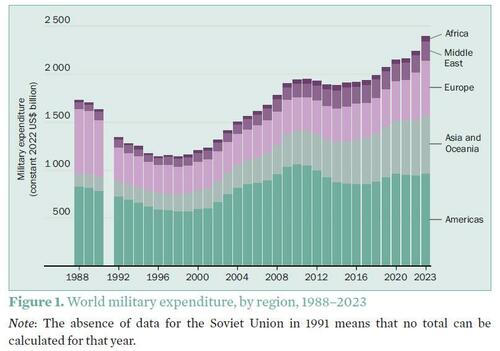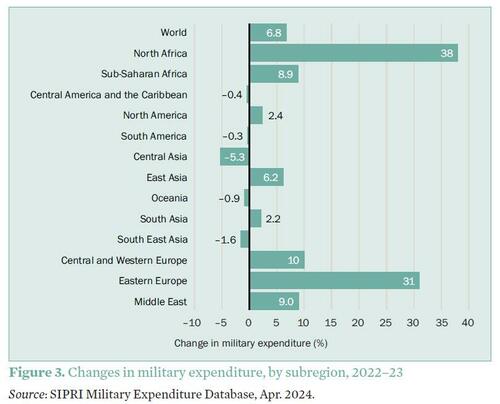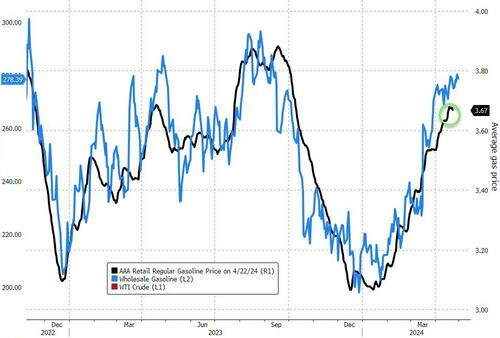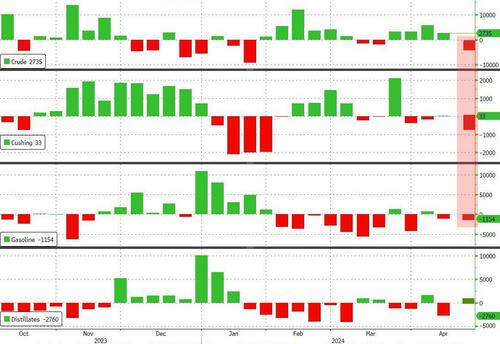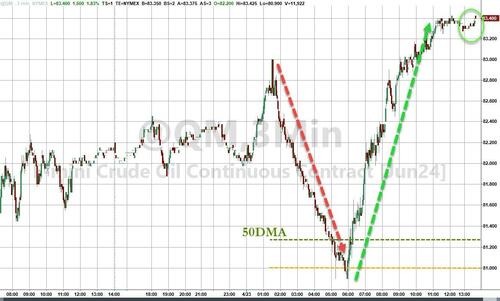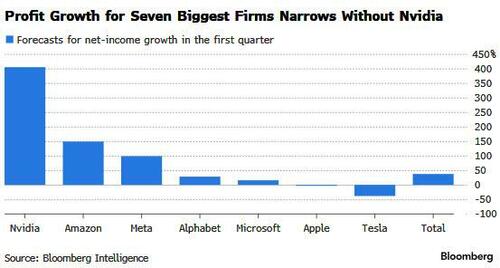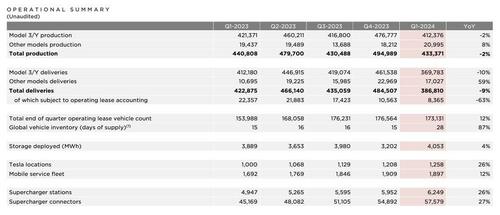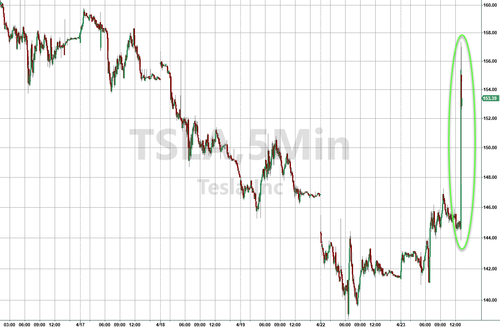Those who with God's help have welcomed Christ's call and freely responded to it are urged on by love of Christ to proclaim the Good News everywhere in the world.
Distinction Matter - Subscribed Feeds
-
Site: Fr Hunwicke's Mutual EnrichmentS Paul loved his fellow Jews, his 'kinsmen' and believed "the gifts and call of God are irrevocable". He believed that at the End, those among them who had rejected Christ would be brought in to the chosen people. He believed that they were like olive branches which had been cut off so that the Gentiles, wild olive branches, could be grafted in. But, when the fulness of the Gentiles had entered Fr John Hunwickehttp://www.blogger.com/profile/17766211573399409633noreply@blogger.com3
-
Site: Fr Hunwicke's Mutual EnrichmentSince the Council, an idea has been spreading that Judaism is not superseded by the New Covenant of Jesus Christ; that Jews still have available to them the Covenant of the old Law, by which they can be saved. It is therefore unnecessary for them to turn to Christ; unnecessary for anybody to convert them to faith in Christ. Indeed, attempting to do so is an act of aggression not dissimilar to theFr John Hunwickehttp://www.blogger.com/profile/17766211573399409633noreply@blogger.com11
-
Site: Fr Hunwicke's Mutual EnrichmentIn 1980, addressing a Jewish gathering in Germany, B John Paul II said (I extract this from a long sentence): " ... dialogue; that is, the meeting between the people of the Old Covenant (never revoked by God, cf Romans 11:29) and that of the New Covenant, is at the same time ..." In 2013, Pope Francis, in the course of his Apostolic Exhortation Evangelii gaudium, also referred to the Old Fr John Hunwickehttp://www.blogger.com/profile/17766211573399409633noreply@blogger.com10
-
Site: Fr Hunwicke's Mutual EnrichmentThe sort of people who would violently reject the points I am making are the sort of people who would not be impressed by the the Council of Florence. So I am going to confine myself to the Magisterium from the time of Pius XII ... since it is increasingly coming to be realised that the continuum of processes which we associate with the Conciliar and post-Conciliar period was already in operationFr John Hunwickehttp://www.blogger.com/profile/17766211573399409633noreply@blogger.com0
-
Site: Fr Hunwicke's Mutual EnrichmentLex orandi lex credendi. I have been examining the Two Covenant Dogma: the fashionable error that God's First Covenant, with the Jews, is still fully and salvifically valid, so that the call to saving faith in Christ Jesus is not made to them. The 'New' Covenant, it is claimed, is now only for Gentiles. I want to draw attention at this point to the witness of the post-Conciliar Magisterium of theFr John Hunwickehttp://www.blogger.com/profile/17766211573399409633noreply@blogger.com13
-
Site: Fr Hunwicke's Mutual EnrichmentWe have seen that the Two Covenant Theory, the idea that Jewry alone is guaranteed Salvation without any need to convert to Christ, is repugnant to Scripture, to the Fathers, even to the post-Conciliar liturgy of the Catholic Church. It is also subversive of the basic grammar of the relationship between the Old and the New Testaments. Throughout two millennia, in Scripture, in Liturgy, in her Fr John Hunwickehttp://www.blogger.com/profile/17766211573399409633noreply@blogger.com7
-
Site: Henrymakow.com
 During a trip to Hong Kong, the billionaire duo decided to grab lunch at McDonald's. To Gates' amusement, when Buffett offered to pay, he pulled out a handful of coupons.Warren Buffett is a billionaire. He gets his meaning from making or saving a dime. Most of the super-rich suffer from spiritual poverty.Whether we are poor or rich, money holds us prisoner. The rich feel poor because of GREED. No matter how much they have, their identity ("feeling good, important, secure") was forged by a society dedicated to making and spending more money.
During a trip to Hong Kong, the billionaire duo decided to grab lunch at McDonald's. To Gates' amusement, when Buffett offered to pay, he pulled out a handful of coupons.Warren Buffett is a billionaire. He gets his meaning from making or saving a dime. Most of the super-rich suffer from spiritual poverty.Whether we are poor or rich, money holds us prisoner. The rich feel poor because of GREED. No matter how much they have, their identity ("feeling good, important, secure") was forged by a society dedicated to making and spending more money.
Money is supposed to free us from material concerns. Paradoxically it does the opposite. We become its prisoners."Enough is a little more than one has." Samuel ButlerUpdated from May 4, 2022 and Oct. 6 2023by Henry Makow PhDFew people take a rational approach to money.This would involve calculating how much money they need in relation to how much money they have, and how much money they make.Rather, people tend to focus on their last 2%. Did their "net worth" increase or derease on a given day?Depending on their tax bracket, this may involve their last $100, $1000, $10,000, $10 million or $10 billion. They ignore their big bank balance or stock portfolio. They always feel poor.Money is supposed to free us from material concerns. Paradoxically it does the opposite. We become its prisoners.We are satanically possessed. This means we identify with money rather than our Divine soul. We are money rather than God's personal representative on earth. The more money we have, the bigger and better we feel. These values are inculcated by our satanist-controlled mass media.I am addressing the roughly 50% of my readers who, according to my Gab poll, have enough or more money than they need. I don't fault the other 50% who don't have enough or are broke for feeling oppressed. Paradoxically the rich suffer from a spiritual impoverishment.The more they identify with their money, the smaller they are. The more money they have, the smaller they are.In the case of the Illuminati bankers, this inner poverty is toxic. They are a cancer that threatens to destroy mankind.They want to "absorb" (their word) all the world's wealth leaving nothing to support humanity. They want it all!We're indoctrinated to seek money. Within limits, money is a great motivator and measure.I know someone who doesn't have to work. He works because he has nothing else to do, and it makes him feel productive and rewarded.Another friend is independently wealthy from investments. He retired a couple of years ago but is returning to his old profession out of sheer boredom.PERSONALI am as satanically possessed as anyone. I have had a lifelong struggle with greed. At age 74, I am just starting to master this demon.Recently I did the calculation above and realized that I have more money than I'll ever spend.My spending habits were formed during eight years as a graduate student living on roughly $10,000 per year. I really don't need or care about material things.Paradoxically, this lack of concern for money did NOT stop me from developing a gambling addiction. When I didn't have much money, I didn't care about it. When I sold Scruples to Hasbro in 1986, I became a money manager and thought my game smarts would extend to the stock market. MISTAKE.Scruples had been a labor of love. I did it because It was a workshop on everyday morality.After my windfall, I became satanically possessed (i.e. GREED.) If someone asked how I was, I said, "I'll ask my broker."We have to be on guard constantly because the voice in our head often is the devil!Then another voice arises from our soul and says, "Cool it, you greedy moron."You gamble with money you'll never spend. More or Less. What is the point? You don't even know your balance.We have a Mexican cleaning woman who supports an extended family. I have never met a woman whose smile exudes such warmth.Surely, these human qualities represent our true riches.Money is the lowest common denominator. People today are consumed by money. They are charmless.YouTube is packed full of "how I got rich" stories.While the world descends into Communist tyranny or faces a nuclear catastrophe, they act like money will save them.For people who have enough, freedom lies in eschewing money. Just not caring about it.Can you do that?
Paradoxically the rich suffer from a spiritual impoverishment.The more they identify with their money, the smaller they are. The more money they have, the smaller they are.In the case of the Illuminati bankers, this inner poverty is toxic. They are a cancer that threatens to destroy mankind.They want to "absorb" (their word) all the world's wealth leaving nothing to support humanity. They want it all!We're indoctrinated to seek money. Within limits, money is a great motivator and measure.I know someone who doesn't have to work. He works because he has nothing else to do, and it makes him feel productive and rewarded.Another friend is independently wealthy from investments. He retired a couple of years ago but is returning to his old profession out of sheer boredom.PERSONALI am as satanically possessed as anyone. I have had a lifelong struggle with greed. At age 74, I am just starting to master this demon.Recently I did the calculation above and realized that I have more money than I'll ever spend.My spending habits were formed during eight years as a graduate student living on roughly $10,000 per year. I really don't need or care about material things.Paradoxically, this lack of concern for money did NOT stop me from developing a gambling addiction. When I didn't have much money, I didn't care about it. When I sold Scruples to Hasbro in 1986, I became a money manager and thought my game smarts would extend to the stock market. MISTAKE.Scruples had been a labor of love. I did it because It was a workshop on everyday morality.After my windfall, I became satanically possessed (i.e. GREED.) If someone asked how I was, I said, "I'll ask my broker."We have to be on guard constantly because the voice in our head often is the devil!Then another voice arises from our soul and says, "Cool it, you greedy moron."You gamble with money you'll never spend. More or Less. What is the point? You don't even know your balance.We have a Mexican cleaning woman who supports an extended family. I have never met a woman whose smile exudes such warmth.Surely, these human qualities represent our true riches.Money is the lowest common denominator. People today are consumed by money. They are charmless.YouTube is packed full of "how I got rich" stories.While the world descends into Communist tyranny or faces a nuclear catastrophe, they act like money will save them.For people who have enough, freedom lies in eschewing money. Just not caring about it.Can you do that? -
Site: Real Investment Advice
Most NFL general managers (GMs) are optimistic and displaying overconfidence today as they prepare for tomorrow’s NFL draft. The draft is a once-a-year opportunity for GMs to acquire talent.
Like investors, GMs often think they are smarter than their competitors, aka the market. Yet, they frequently have similar mindsets and follow the same narratives that drive their competition.
As we will share, overconfidence and groupthink among football GMs and investors are behavioral flaws that often harm performance. Having the tools and strategies to mitigate our behavioral traits is extremely valuable and can lead you to better returns.
Overconfidence In The NFL
Four of the first five picks in the draft are expected to be quarterbacks. Not only is the quarterback the most important position on the field but this year’s draft is hyped as having several future greats.
Based on data from Warren Sharp, an NFL analyst, most of the quarterbacks taken in the early rounds will be average. His Fox Sports article entitled The success rate of first round QBs makes Lamar Jackson’s case for him, quantifies just how poor the odds are of drafting the next Super Bowl-winning quarterback.
There have been 38 quarterbacks drafted in the first round since 2011, the year the NFL changed the collective bargaining agreement.
These 38 first-round quarterbacks have made a total of 1,909 starts. Their record? 1034-1035-7.
He claims that of those 38 quarterbacks, only one, Patrick Mahomes, has won a Super Bowl. Furthermore, of the 28 from that group who are no longer on their initial contracts, the average time they were a starter was a mere 3.4 years.
Despite the proven mediocrity of quarterbacks taken in the first round, we have little doubt that overconfidence will be on full display by the GMs drafting quarterbacks with their top picks after they make their selections.
Groupthink In The NFL
This behavioral trait arises when people seeking conformity think and act similarly. Typically, groups reach a consensus opinion without proper evaluation and with minimal alternative viewpoints.
For instance, it is widely accepted that the four quarterbacks likely to go in the top five, Williams, Daniels, Maye, and McCarthy, will be excellent pros. Most NFL analysts offer differences between the quarterbacks but praise the physical and mental traits they believe will make them NFL starts. Very few analysts have poor ratings on any of those four quarterbacks.
Choosing one of the four quarterbacks is comforting. Simply, GMs have cover if their pick is a dud. Who could have known? Every expert thought he would be a superstar!

Investor Overconfidence And Groupthink
Replace players with investment ideas and GMs with investors. The overconfidence and groupthink mentality impacting GM draft day decisions are similar to those investors always face.
We quantified the odds of GMs picking above-average quarterbacks earlier. Per DFA Funds, the odds of an investor outperforming the market are even more daunting.
We saw from the data above that an investor has about a 75% chance of underperforming the market in any given year, which means you have a 25% chance of beating the market in any given year.
The message to take away from that statistic is to leave your confidence at the door!
Regarding groupthink, most investors, like GMs, find comfort in knowing that many other investors are doing the same thing. Market narratives are a form of groupthink. Narratives help explain market movements and trends. Often, a narrative develops after a trend has started. In other words, rightly or wrongly, the narrative is the rationale.
Today, narratives appear to be quicker to form and longer lasting. Maybe the advent of social media has allowed for their quicker dissemination and growth.
Narratives describe the mindset of a group of investors. When you unknowingly invest based on a narrative, you are likely setting yourself up for failure.
Strategies To Combat Behavioral Traits
Appreciating that GMs have a one in three chance of successfully using a precious top-five draft pick on a quarterback or that only a quarter of investors will beat the market, we best have tools to manage our behavioral traits and improve our odds of success.
Zig
Warren Sharp advises GMs to “zig while others zag.”
To zig is to have a contrarian mindset. For instance, it’s important for your portfolio to have popular stocks leading the market higher. But at the same time, understand that confidence can wane quickly, and a new set of stocks will take the throne soon enough. Don’t overstay your welcome in a narrative.
It wasn’t that long ago that the Magnificent Seven stocks were all the rage. Their returns handily beat almost every stock and index. Holding a meaningful subset of the seven stocks was vital to keep up with the broad market indexes. However, the Magnificent Seven’s period of outperformance has either ended or is on pause. But, the narrative still thrives, and whether it’s already happening or will occur shortly, investing in the aged groupthink will catch many investors offside.
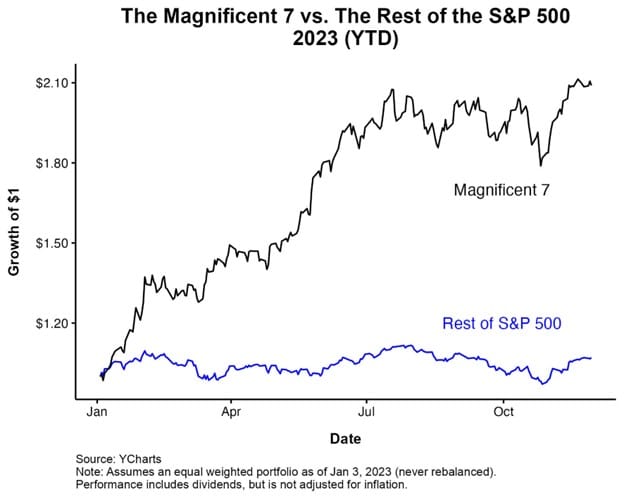

Take Profits
It’s hard to sell when others are buying. Still, when the narrative-driven stocks fall out of favor, the prior profits and reduced position sizes will bolster returns and lessen the risk of underperforming the market.
Appreciating what the market, and not popular narratives, tell you is equally vital. For instance, have you noticed that utilities and energy are the best-performing sectors lately? Those solely holding the Magnificent Seven and neglecting other sectors are falling behind.
The SimpleVisor table below shows the relative performance of the Magnificent Seven stocks and XLU, the utility ETF, versus the S&P 500 over various time frames. Other than NVDA, most of the seven have been underperforming the market as of late. Also, the once poorly performing utility sector has been beating the market for the last 45 days. Selling the Magnificent Seven 45 days ago to buy utilities would go against groupthink, but it was a smart call.
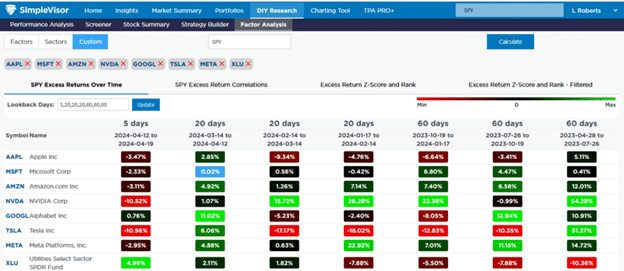
Appreciate Your Options
The GMs with the top five picks have a precious option. Instead of picking a quarterback with limited odds of success, they can trade the pick to another team. In exchange, they might receive multiple high-level draft picks, boosting the odds of success.
Other positions in the NFL draft have much better success rates than quarterbacks. If a GM can set aside their confidence in their ability to pick the right quarterback, they can increase the odds that they could easily land at least two very good players and possibly a pro bowler. Maybe they can even use one of the picks to get a quarterback in the later rounds. Let’s not forget Brock Purdy, the San Francisco quarterback who led the 49ers to the Superbowl, was Mr. Irrelevant, the last person taken in the draft.
Investors have options, too. Many stocks, sectors, and factors will likely outperform the market but do not fit the narrative du jour. While buying what others aren’t may be uncomfortable, it may be more profitable.
The other lesson is to diversify. Putting most of your eggs in one basket can significantly impact your relative performance. You will underperform if you are proven wrong, as is most common.
Let Winners Run
One of the most popular Wall Street sayings is, “Cut your losses short and let your winners run.”
If our chances of beating the market are one in four, doesn’t it make sense to trade your portfolio actively? Many investors do the opposite. Their confidence and the attraction of groupthink keep them in underperforming stocks. At the same time, alternative stocks that are less followed may be the best bets.
It can be appropriate and profitable at times to follow the crowd. However, at all costs, don’t ignore alternative views.

Summary
We risk underperforming the market by falling victim to our natural behavioral traits. Therefore, we owe it to ourselves to entertain and understand alternative views. As odd as it may seem these days, we need to watch FOX News and read the New York Times. We must challenge ourselves to understand better things that may not be comfortable.
Seek out and study the views of others with whom you disagree. By better understanding opposing opinions, you will strengthen your existing views or better recognize flaws in your current logic. Either way, an investment thesis is better for it.
Most importantly, remember that you are only human. The Patrick Mahomes of the investment world are few and far between. At times, overconfidence is a good trait, but it can also be a critical flaw.
The post Overconfidence In NFL Drafts: A Lesson For Investors appeared first on RIA.
-
Site: Fr Hunwicke's Mutual EnrichmentSo Thomas Blackburn iniquitously secreted away alabaster tablets within Ripon church; subsequently, he denied having removed them from the church! Which, obviously, was true! It was recorded in 1871 that, during alterations within the choir, three of the alabasters were found: a statue of a bishop (may we nominate dear S Wilfrid?), and two tablets, respectively of the Resurrection and of theFr John Hunwickehttp://www.blogger.com/profile/17766211573399409633noreply@blogger.com0
-
Site: Crisis Magazine

The dropping of the atomic bomb was evil. For the average conservative commentator, this comment automatically causes a knee-jerk reaction with the same old platitudes. For decades, the American Right has been the defender of our usage of the atomic bomb, with either “it saved more American lives” or “it was the lesser of two evils” being some of the strongest candidates.
-
Site: Crisis Magazine

Beneath the papal altar in St. Peter’s Basilica in Rome, among the grottos and tombs, is the chapel of the Madonna della Bocciata. Inspiring. Revered. But often overlooked. Few of the five million annual Vatican visitors venture down the steps to tour the grottos, and of those that do, many miss the fresco of the Madonna placed there in the 1600s. Painted by Pietro Cavallini (c. 1250-1330)…
-
Site: AsiaNews.itToday's news: Appeal hearing for Cardinal Zen and other pro-democracy activists in the appeal against convictions set for January;A North Korean delegation is in Iran; The Taliban's Afghanistan continues to export coal to Pakistan; In Russia, floods also devastated old uranium mines.
-
Site: AsiaNews.itIn Kaliningrad, the local governor talks about the necessary 'Russian interpretation of Kantianism', amidst gastromic festivals and bots answering questions from the audience by referring to the philosopher's writings. While Russia's leading neo-Kantian philosopher Viktor Vakštein is demoted to 'foreign agent' and forced to emigrate to Israel.
-
Site: Voltaire NetworkWhile the mullahs' rhetoric is clearly anti-Israeli, relations between the two countries are far more complex than one might think. There are in fact two opposing groups in Iran, one intent on doing business by all means with the rest of the world, while the other aims to liberate peoples from colonization. The former has never stopped doing business with Israel, while the latter fights against it, just as it fights against the imperialism of the United Kingdom and the United States.
-
Site: The Catholic Thing
 The Catholic faith and traditions of the Habsburg monarchies helped them enjoy mostly stable marriages and large, happy families that were crucial in governing their kingdoms for more than eight centuries. In his new book, Eduard Habsburg, Hungary’s ambassador to the Holy See, discusses the principles he believes all people can learn from the Habsburgs in this troubled age when marriage and the family are especially under attack.
The Catholic faith and traditions of the Habsburg monarchies helped them enjoy mostly stable marriages and large, happy families that were crucial in governing their kingdoms for more than eight centuries. In his new book, Eduard Habsburg, Hungary’s ambassador to the Holy See, discusses the principles he believes all people can learn from the Habsburgs in this troubled age when marriage and the family are especially under attack. The post ‘The Habsburg Way’: Lessons for Today, From Openness to Life to How to Die Well appeared first on The Catholic Thing.
-
Site: The Catholic Thing
 Holocaust survivor Tova Friedman’s Auschwitz prisoner tattoo is still visible to this day, serving as a “never again” reminder as her Jewish grandchildren face a modern wave of antisemitism. “It’s like a cancer. If you don’t stop it early, it metastasizes. It’s going to kill the body. It’s killing our country.” She says that when she came to the U.S., it was “like I came to the Promised Land, and it was just a fabulous experience. And here it is today. I am shocked, I am pained, I’m scared. I’m scared both for America, I’m scared for the Jews, and it’s very painful for our young people.”
Holocaust survivor Tova Friedman’s Auschwitz prisoner tattoo is still visible to this day, serving as a “never again” reminder as her Jewish grandchildren face a modern wave of antisemitism. “It’s like a cancer. If you don’t stop it early, it metastasizes. It’s going to kill the body. It’s killing our country.” She says that when she came to the U.S., it was “like I came to the Promised Land, and it was just a fabulous experience. And here it is today. I am shocked, I am pained, I’m scared. I’m scared both for America, I’m scared for the Jews, and it’s very painful for our young people.”
The post Auschwitz survivor: antisemitism is a ‘cancer’ spreading across America appeared first on The Catholic Thing.
-
Site: The Catholic Thing
 Florida will be voting in November on the Limiting Government Interference with Abortion Amendment, which would change the Florida Constitution to include a provision reading: “No law shall prohibit, penalize, delay, or restrict abortion before viability or when necessary to protect the patient’s health, as determined by the patient’s health care provider.” Will Florida turn the tide on pro-life defeats in nearly every other state?
Florida will be voting in November on the Limiting Government Interference with Abortion Amendment, which would change the Florida Constitution to include a provision reading: “No law shall prohibit, penalize, delay, or restrict abortion before viability or when necessary to protect the patient’s health, as determined by the patient’s health care provider.” Will Florida turn the tide on pro-life defeats in nearly every other state?
The post Will Florida become the first state to defeat an abortion amendment? appeared first on The Catholic Thing.
-
Site: The Catholic Thing
Jesus, when I see you held by your Mother,
Leaving her arms
Trying, trembling, your first steps
On our sad earth,
Before you I’d like to unpetal a rose
In its freshness
So that your little foot might rest ever so softly
On a flower!….This unpetalled rose is the faithful image,
Divine Child,
Of the heart that wants to sacrifice itself for you unreservedly
at each moment.
Lord, on your altars more than one new rose
Likes to shine.
It gives itself to you…..but I dream of something else:
To be unpetalled!….”The rose in its splendor can adorn your feast,
Lovable Child,
But the unpetalled rose is just flung out
To blow away.
An unpetalled rose gives itself unaffectedly
To be no more.
Like it, with joy I abandon myself to you,
Little Jesus.One walks on rose petals with no regrets,
And this debris
Is a simple ornament that one disposes of artlessly,
That I’ve understood.
Jesus, for your love I’ve squandered my life,
My future.
In the eyes of men, a rose forever withered,
I must die!…For you, I must die, Child, Beauty Supreme,
What a blessed fate!
In being unpetalled, I want to prove to you that I love you,
O my Treasure!…
Under your baby steps, I want to live here below
With mystery,
And I’d like to soften once more on Calvary
Your last steps!….The post An Unpetalled Rose appeared first on The Catholic Thing.
-
Site: The Catholic Thing
 When Rev. Earl K. Fernandes was ordained as bishop of Columbus in 2022, he observed that there were more bishops ordained than priests that year in the diocese since there were no priestly ordinations and just 17 seminarians. But Columbus had 16 men enter the seminary last year and has 12 applications for next year. The diocese had a total of 37 seminarians and five priestly ordinations this year, as well as three men ordained to the transitional diaconate.
When Rev. Earl K. Fernandes was ordained as bishop of Columbus in 2022, he observed that there were more bishops ordained than priests that year in the diocese since there were no priestly ordinations and just 17 seminarians. But Columbus had 16 men enter the seminary last year and has 12 applications for next year. The diocese had a total of 37 seminarians and five priestly ordinations this year, as well as three men ordained to the transitional diaconate.The post Ordinations on the rise in Columbus, OH appeared first on The Catholic Thing.
-
Site: The Catholic Thing
As we get older, the temptation to be dissatisfied with our lives can grow. A fear of aging, along with memories of past failures and mistakes, can obscure the good in the world around us. A culture of consumption, distractions, and anesthetics, which is what we’ve created, feeds on that restlessness and profits from the anxiety that so often animates our desires. In the process, it steals something uniquely human from us. It reduces us to a bundle of material appetites. And it resents anything transcendent because questions about meaning threaten the machinery of wanting and possessing more.
This is one of the reasons why beauty – real beauty – can seem so diminished in our daily lives. Real beauty draws us up and out of ourselves; it connects us to realities that can’t be commodified. It re-sacralizes the world, even if only for a moment. And in doing that, it indicts the vulgarity, cynicism, and disorder that constitute so much of contemporary life.
But we’re better than our base appetites. We deserve something more than commercialized, materialist junk. And the reason why is simple: As the philosopher Roger Scruton wrote in his book The Face of God, “the [human] face shines in the world of objects with a light that is not of this world – the light of subjectivity.”
Today’s social sciences tend to reduce individuals to data points and the human experience to patterns of behavior. And of course it’s true that we humans are animated carbon, just like every other animal. We have instincts and we reproduce more or less like every other animal. But we’re not like any other animal. We’re uniquely conscious of both our individuality and our mortality. Which explains both our fear of loneliness and our need for meaning. We’re the only species that buries and reveres its dead. It’s in our nature to want more than this life can give; to sense that something more and higher might be possible.
Again, in The Face of God, Scruton wrote:
Take away religion, [take away] philosophy, take away the higher aims of art, and you deprive ordinary people of the ways they can represent their apartness. Human nature, once something to live up to, becomes something to live down to instead. Biological reductionism nurtures this “living down,” which is why people so readily fall for it. It makes cynicism respectable and degeneracy chic. It abolishes our kind, and with it, our kindness.
Beauty, in contrast, is an affirmation of our shared human dignity. It reminds us of the goodness of life in an age of transgressive narcissism and repudiation of the past. This is why, in the Catholic tradition, hostility to high culture; to excellence and precision in the life of the mind; and more recently and narrowly to the traditional Latin Mass, can seem so strange.
 Face of God (detail from “Creation of the Sun and Moon”) by Michelangelo di Lodovico Buonarroti Simoni, c. 1510 [Sistine Chapel, Vatican]
Face of God (detail from “Creation of the Sun and Moon”) by Michelangelo di Lodovico Buonarroti Simoni, c. 1510 [Sistine Chapel, Vatican]
I grew up with the old form of the Mass. I have no desire to go back to it. It could often be mechanical and uninspiring, and the liturgical reforms of the Second Vatican Council were overdue and necessary. When done well, they produce a form of worship that’s both reverent and profound.
But what the old Mass did have, when a priest celebrated it with humility and conviction, was a tactile beauty that appealed to all the senses, especially sight, sound, and smell. And in doing that, it communicated, vividly, the mystery of an invisible reality — a God radically holy, a God radically “other than” us, but at the same time intimate, loving, and incarnate in our humanity.
People leave the Catholic Church and the wider Christian community today for many different reasons. But one of those reasons is the unconvincing, bourgeois mediocrity that can be too common in our worship – which then infects the whole atmosphere of Christian life.
My point is simply this: Ugliness kills the spirit and explains the impulse for desecration that infects so much of modern “art.” Ugliness dumbs down the imagination, softens the brain, and hardens the heart. People of faith have a hunger for beauty and mystery and belonging to a story; the story of a living, believing community, ongoing and true across cultures and time. And they’re too often not getting that in their local churches.
In his book Beauty: A Very Short Introduction, Scruton wrote that:
Our need for beauty is not something that we could lack and still be fulfilled as people. It is a need arising from our metaphysical condition, as free individuals seeking our place in a shared and public world. We can wander through this world, alienated, resentful, full of suspicion and distrust. Or we can find our home here, coming to rest in harmony with others and with ourselves. The experience of beauty guides us along this second path: It tells us that we are at home in the world, that the world is already ordered in our perception as a place fit for the lives of beings like us. But beings like us. . .become at home in the world only by acknowledging our “fallen” condition. . . .Hence the experience of beauty also points us beyond this world to a “kingdom of ends” in which our immortal longings and our desire for perfection are finally answered.
This is why a hunger for beauty and the religious frame of mind are so closely related and so vital for human flourishing. They both flow from a humble sense of human imperfection while reaching for the transcendent. For better or worse, it’s also why so many young families seek out the beauty and mystery of the old Latin Mass.
We need beauty to ennoble our imagination, to guide our scientific intuitions, and to poke through the blather and venom of “wokeness.” We need it to see reality clearly. We need beauty because it keeps us human. Beauty tells us that despite our sins and failures, Creation is good. And behind it is a Creator who loves us.
 Roger Vernon Scruton by Francesco Guidicini , 2011 [National Portrait Gallery, London]
Roger Vernon Scruton by Francesco Guidicini , 2011 [National Portrait Gallery, London]
The post The Face of God appeared first on The Catholic Thing.
-
Site: AntiWar.com
The North American peace movement is contesting ongoing US wars in Ukraine and Palestine and preparations for war with China. Out of the fog of these wars, a clear anti-imperialist focus is emerging. Giving peace a chance has never been more plainly understood as opposition to what Martin Luther King, Jr., referred to as “the … Continue reading "The North American Peace Movement at an Inflection Point"
The post The North American Peace Movement at an Inflection Point appeared first on Antiwar.com.
-
Site: AntiWar.com
The clusterf*ck in the US House of Representatives this past weekend is surely the final straw. The dreadful grip of the UniParty on national security policy has finally produced sheer madness in a single package. To wit: $95 billion of foreign aid boondoggles that do not benefit America’s homeland security in the slightest. An extension … Continue reading "The UniParty’s Day of Infamy"
The post The UniParty’s Day of Infamy appeared first on Antiwar.com.
-
Site: AntiWar.com
One, erratic and often unhinged, blew up the U.S.-Iran accord that was the landmark foreign policy achievement of President Obama’s second term. He then ordered the assassination of a top Iranian general visiting Iraq, dramatically raising tensions in the region. The other is a traditional advocate of American exceptionalism, a supporter of the U.S.-Iran agreement … Continue reading "Handling – and Mishandling – the Iran Nuclear Program"
The post Handling – and Mishandling – the Iran Nuclear Program appeared first on Antiwar.com.
-
Site: The Remnant Newspaper
-
Site: Novus Ordo Watch
When blasphemy and heresy meet sodomy…
Queer in Trier: ‘Bishop’ Ackermann Presides Over Ecumenical Rainbow Service for Aberrosexuals

In the Vatican II Sect, the Modernist layman Stephan Ackermann has been playing ‘Catholic bishop’ of Trier, Germany, since 2009. It was then that ‘Pope’ Benedict XVI appointed him to succeed ‘Bishop’ (now ‘Cardinal’) Reinhard Marx, who had been promoted to become ‘Archbishop’ of Munich and Freising.
Every year the Tier diocese celebrates the so-called Heilig-Rock-Tage. It is a 10-day church festival centered on the relic of the Holy Tunic (Heiliger Rock) of Jesus Christ. This year, the festival took place from Apr.… READ MORE
-
Site: Novus Ordo Wire – Novus Ordo Watch
When blasphemy and heresy meet sodomy…
Queer in Trier: ‘Bishop’ Ackermann Presides Over Ecumenical Rainbow Service for Aberrosexuals

In the Vatican II Sect, the Modernist layman Stephan Ackermann has been playing ‘Catholic bishop’ of Trier, Germany, since 2009. It was then that ‘Pope’ Benedict XVI appointed him to succeed ‘Bishop’ (now ‘Cardinal’) Reinhard Marx, who had been promoted to become ‘Archbishop’ of Munich and Freising.
Every year the Tier diocese celebrates the so-called Heilig-Rock-Tage. It is a 10-day church festival centered on the relic of the Holy Tunic (Heiliger Rock) of Jesus Christ. This year, the festival took place from Apr.… READ MORE
-
Site: Real Jew News
Democracy For Dummies
April 23 2024___________________________________
More Vids!
+BN Vids Archive! HERE!
___________________________________
Support The Brother Nathanael Foundation!
Br Nathanael Fnd Is Tax Exempt/EIN 27-2983459

Or Send Your Contribution To:
The Brother Nathanael Foundation, POB 547, Priest River, ID 83856
E-mail: brothernathanaelfoundation([at])yahoo[dot]com
Scroll Down For Comments
-
Site: Public Discourse
The name Francis X. Maier may not be well-known outside the inside circles of ecclesiastical life because he has worked diligently but effectively behind the scenes. He served for twenty-three years as senior aide to Archbishop Charles Chaput in the Archdiocese of Denver and then in the Archdiocese of Philadelphia. Before that, he served for fifteen years as editor-in-chief of the National Catholic Register newsweekly, and earlier as a screenwriter and story analyst based in Los Angeles. He is currently a senior fellow in Catholic Studies at the Ethics and Public Policy Center in Washington, D.C.
Maier has written an excellent book, True Confessions: Voices of Faith from a Life in the Church, just released by Ignatius Press, that should rightfully make his name better known. In this concise and readable book, Maier summarizes the frank and in-depth interviews that he conducted with 103 bishops, clergy, religious, and lay men and women from various backgrounds over a seventeen-month period, from December 2020 through May 2022. While the persons interviewed do not hesitate to point out the shortcomings that they see in the life of the Church as well as her strengths, they do so out of love for the Church and a fervent desire to fix the flaws of the human failings of its leaders and members.
In his introduction to the book, Archbishop Chaput writes:
At heart, the Church is a “she”, not an “it”: the Bride of Christ; a mother of tenderness and the teacher of truth. And even in an age that derides her and dismisses the need for a God; even in an age when her weakness is often brutally obvious, the Church is younger, stronger, and more beautiful than her enemies have the capacity to understand or see.
Then Archbishop Chaput added a personal note about Maier. He wrote:
In Denver, in the early days of our collaboration, I sometimes stopped by Fran’s office at the end of the day to think out loud or exchange ideas. I asked him once why he worked for the Church when he could do something else that paid more. He looked at me quizzically, and then said, “Because I love her.”
In Chapter One of the book, Maier then explains why he loves the Church:
I love the Church because she is my home, my extended family, the mother who takes us back whatever our failures and mistakes. I love her for the grandeur of the art, music, law, architecture, and literature she has inspired. I love her for the brilliance of her intellectual legacy, which has no parallel in human experience. I love her for the good that remains in the civilization she shaped. I love her for her patience and mercy. I love her because she treasures and refuses to abandon the weak. I love her above all because what she teaches is salvific and true. There has never been a Christianity without the Church. She’s essential to the Christian life. The Church preceded the Gospels, not the other way around. And the Christian faith has never been merely a personal relationship with God, as important as that is. It has always been, beginning in the Upper Room, an assembly of believers, an ekklesia—a Church. I love the Church despite the sins of her leaders and her people, including my own.
The various chapters of the book consist of asking different audiences why they love the Church and what they would do to correct any perceived shortcomings in the leadership or life of the Church. While two chapters are interviews of priests, deacons, and bishops (not including me), the vast majority of people interviewed are lay Christian faithful, including a diocesan finance officer, the president of an investment advisory firm, university professors, theologians, legal scholars, business people, social scientists, journalists, immigrants, philanthropists, leaders of lay apostolates, husbands, wives, homeschooling mothers, and non-Catholic Christians. He asks them questions like:
Do you love the Church? If so, why, and what do you love about her?
What are your impressions of the Church, and have they changed over the years?
What are the biggest mistakes a diocese or parish typically makes?
What do you see as the major problems in the Church right now?
What issues, particularly in the United States, need to be addressed for a renewal of the Church to take place?
When you look for practical sources of hope right now, what are they?
Since so many people offer their opinions in this book, it is not surprising that they do not all agree, nor do all share the same advice. But that is one of the attractive qualities of this book, in that the reader will hear a variety of voices, some of whom they may identify with and others with whom they may not. A key indicator of what readers might expect in these answers is the number of times the following words appear in this book: Church–732, God–152, Jesus–70, faith–255, hope–63, and love–116.
The title of the book comes from the 1981 film True Confessions, based on the crime novel of the same name by John Gregory Dunne. As Maier explains in the final chapter, True Confessions is
not a happy portrait of the Church, her people, or her clergy. . . . The heart of both the novel and the film is the fractious relationship between two Catholic brothers: Des and Tom Spellacy. Des, played in the film by Robert De Niro, is a rising young monsignor, chancellor of the archdiocese, right hand to the cardinal, and on the fast track to be a bishop. Tom (Robert Duvall, in one of his finest roles) is an LAPD detective; the “black sheep” son of their Irish Catholic family. Cynical toward life in general and the Church in particular, Tom Spellacy is the lens through which the story unfolds. Tom is a complicated soul: resentful of his brother’s perceived goodness, calloused by the meanness of the streets, but also protective of his brother’s reputation. Des Spellacy is no less complex: smart, shrewd, ambitious, and (when necessary) ruthless—and also keenly aware of his own sin of pride, masked by a veneer of priestly piety. Onto Tom’s police plate drops the case of the murdered young woman. Where it leads provides the rest of the drama.
His point is that
alongside the great good that can be achieved through Christian engagement in public leadership, great harm can be done to the Church and her mission when her people and her clergy confuse material success with service to the Gospel. A comfortable Church, a colluding Church, a publicly esteemed Church can very easily become a dead Church. And when faith is merely skin deep, it’s worth remembering that societies sooner or later shed their dead skin.
To prevent this disintegration of the Church’s vitality, Maier proposes nothing less than the call to sainthood: “We moderns tend to think that the era of the saints is over. But we’re wrong. It’s always the era of the saints.” This imperative of personal sanctity is not confined to clergy or consecrated religious, but extends to each and every person: “The task of any ‘new reformation,’ any purifying re-formation of Church and world, begins with each believer.”
In the end, a good book leaves the reader hungry for more, and that is how I felt when I reached its end. We hear directly from Maier only in the preface and chapters one and eleven, while the rest of the chapters are a blend of interview responses with Maier’s brief commentary. Those interviews provide a helpful cross-section of views on the strengths of the Church and suggestions for addressing the weaknesses of ecclesial life. But I found myself wanting to hear more from Maier himself because he obviously has a lot of wisdom to share.
For example, I took solace as a bishop in these words:
Bishops in the Church tend to get blamed for everything. And sometimes they earn it. But bishops didn’t invent the birth control pill. They didn’t create the sexual anarchy that flowed from it. Bishops didn’t invent the transistor, or the microchip, or the cell phone, or video games, or gay dating apps, or the internet cocoon of pornography that’s destroyed millions of families and vocations. And bishops don’t have a magic wand to cancel out the massively negative influence of popular culture on their people.
Maier also has sound advice for everyone else in the Church when he says that we are
harvesting the effects of a century of Catholic assimilation and naïve optimism about the compatibility of Catholic teaching and American culture. I’ve always believed in our potential as Catholic Christians to be a leaven in American life. It just hasn’t worked out that way. Of course, that can change. But it requires leaders, and their people, who think in terms of the long haul and commit to missionary witness as their first priority in thought and deed.
Maier’s love for the Church comes through in this book and is why others who love the Church will want to read it. Perhaps we can hope for a sequel in which we will get to hear more of Maier in his own words.
Image by sidneydealmeida and licensed via Adobe Stock.
-
Site: Zero HedgeWave Goodbye To Another Set Of Freedoms With The New Digital IDTyler Durden Tue, 04/23/2024 - 19:45
Authored by Graham Young via The Epoch Times,
“Papers please” used to be the ostinato of totalitarian systems, at least in the movies.
With the passing of the government’s Digital ID bills, Australians will have to become used to the digital equivalent - so what does that say about present-day Australia?
A few things have surprised me over the last few years, not the least the way the famous Aussie spirit of insubordination has been subsumed into a goody-two-shoes compliance with whatever capricious orders the authorities made.
I can’t imagine our forebears accepting lockdowns and forced vaccinations, and I certainly couldn’t see them accepting an identity card linking not just government accounts but private sector ones as well.
While the first proposition is an assertion based on a gut feeling, the second is very much based on fact.
Remember the Australia Card?
In 1984, the Hawke Labor government introduced the Australia Card, and for the next three years, the government and opposition parties tussled over it to the extent that it triggered a double-dissolution election in 1987.
Objections didn’t just come from the federal Opposition either.
Queensland Labor Senator George Georges resigned from the governing party in 1986 over the issue, and in the lower house, Labor backbencher Lewis Kent said:
“Nothing can be more un-Australian than the need to provide one’s identity on the call of an official, be it a policeman or a bureaucrat. It would be more appropriate for the proposed card to be called a Hitlercard or Stalin-card.”
As a result, while the government won the 1987 election, and had the numbers to push the card through, instead, it withdrew the card when a technicality was found that could have affected its operation. One senses this was a relief.
Individual Freedom Chipped Away, One Law at a Time
Yet, apart from a few senators this time there has been little outcry in response to the Albanese government’s Digital ID, although the Liberal-National Opposition did vote against it.
A form of this ID was recommended by the Murray Inquiry into the Financial System in 2014, but the committee was careful to avoid recommending a full-blown government-issued identity card because of the Australia Card debacle.
The then-Liberal-National government acted on these recommendations, but its version of the bill was to facilitate private organisations to issue their own digital identity cards, rather than the government.
Why has the government now decided to make the card a government-issued one, when the recommendation and the draft legislation was for a competitive system?
At one level one might say it is symptomatic of this Labor government that it wants to control everything and is suspicious of both private enterprise and competition.
At another level, it has been gnawing away at the independence of the citizenry, particularly the independence of thought, so maybe there is a long-term agenda of control here.
Two pieces of draft legislation, and one draft regulation, exemplify this tendency—the proposed draft Communications Legislation Amendment (Combatting Misinformation and Disinformation) Bill 2023, the Online Safety (Relevant Electronic Services—Class 1A and Class 1B Material) Industry Standard 2024, as well as the Religious Discrimination Bill.
The combination of these is to restrict what citizens can say, teach, and whom they associate with, depending on what is approved by the government, or worse, regulators.
Recent Tragedies Reveal How Eager Authorities Are to ‘Protect’ Us
Almost as though to prove the dangers of these proposed laws, the Commonwealth “censor” eSafety Commissioner Julie Inman Grant just days ago ordered Meta and X to remove videos showing footage from the stabbing incidents at Westfield Bondi Junction shopping centre, and the Christ the Good Shepherd church at Wakely.
I’ve seen this footage, as have many other Australians, and suffice it to say, were I the eSafety commissioner, they would still be up.
When it comes to horror, the footage I have seen from Gaza and Ukraine, and reproduced in the pages and on the websites of the major news sites, is more horrific than any of this footage.
And where is the justification for censoring the information that individuals can now access for themselves?
For a moment there, we all became citizen journalists, able to view events and make our own decisions, and now the government is trying to take our accreditation away from us.
Indeed, some of these clips are uplifting as they show acts of heroism as men throw themselves between attackers and victims, or tend to the wounded.
Ms. Grant only has powers over commercial entities, so I can still, for the moment, show the videos on my blog.
But should we all have a unique identifier, known to the government and cross-referenced to every other activity that we are involved in, who knows what petty bureaucrat will hold my free will in their hands? And what else might the government interfere with?
Voluntary? Not Really
In Canada, a country that shares our democratic norms, we saw the Trudeau government bar protestors, and any supporters who donated money to their cause, from using their bank accounts.
Imagine what an interlinking record could allow them to have done.
Is it too far-fetched to think that could happen in Australia?
The government says these concerns are absurd.
The digital ID card is “voluntary” and will only link records to the person, not link them together, and records will be encrypted. It also claims that it will protect against cyber-attacks.
The voluntary aspect is laughable.
You may be able to access your Centrelink welfare benefits without it, but you will need to physically go down to the Centrelink office, even if you live in Oodnadatta—a remote outback town in South Australia—and if the office is in Perth, Western Australia.
And if you are a company director, you will need one, full-stop, because of the now-mandatory “director IDs” introduced by the Morrison government in 2021.
If “voluntary” doesn’t mean voluntary for all people and all activities, then it doesn’t mean voluntary at all.
Believe It or Not, the Slippery Slope Is Real
So why are we acquiescing to this scheme?
Perhaps it is because we’ve become too compliant—that the irreverent generation were the original immigrants and their sons and daughters, and now we are onto third, fourth, fifth generations and more, the spirit of adventure that brought people here has dissipated.
Or maybe it’s the case that the frog has been swimming in digital waters that have gradually risen in temperature.
First, we allowed social media companies to monetise us in return for the free use of their platforms, and then we allowed them to cross-reference our online activities to create profiles to then be used for other unrelated sites.
And how is that working out? They abuse their power.
We know that, come election time, they will be putting their thumbs on our scales and showing us material that they deem suitable, rather than allowing us to make our own decisions.
We also know that they work hand-in-glove with unscrupulous administrations to sell us lies like “safe and effective” and to suppress embarrassing facts, such as the high probability that viruses escape from laboratories more regularly than from pangolins in a market (particularly when the market didn’t have any pangolins for sale).
I don’t believe that governments are any more trustworthy than social media, especially if they are staffed with Bruce Lehrmanns and Brittany Higgins’s.
Democracy is meant to be government by the people, for the people. And Google’s motto was “Don’t be evil.”
But one seems to be converging on government by anyone but the people, and the other seems to have dropped the motto, maybe ashamed of their hypocrisy.
Either way, human institutions seem inexorably to head towards dissolution, so the less they know about you and can link together, the better.
So I’ll probably pass on my Digital ID.
Whoops, I’m a company director. Looks like they are closing in on me already.
Looks like I’ve already learned the true, government-approved, meaning of “voluntary.”
* * *
Views expressed in this article are opinions of the author and do not necessarily reflect the views of The Epoch Times or ZeroHedge.
-
Site: Ron Paul Institute - Featured Articles
In the United States House of Representatives, Rep. Dennis Kucinich (D-OH) was known for his progressive views, while Ron Paul (R-TX) was known for his libertarian views. There were many times when the two representatives disagreed about American policy and legislation. But, there was also much overlap in their views in regard to United States foreign policy and liberty in America.
In this area of overlap, the two men worked together many times in the House, advocating for the US seeking peace abroad and protecting liberty at home. This collaboration has continued since both men left the House in 2013, with Dennis Kucinich serving as an Advisory Board member for the Ron Paul Institute for Peace and Prosperity that Paul founded soon thereafter.
Interviewed last week by Glenn Greenwald at System Update, Kucinich addressed a possibility he had floated back in 2007 when on the presidential campaign trail. Greenwald queried Kucinich about Kucinich, then participating in the Democratic presidential primary, having offered Paul, who at the same time was seeking the Republican presidential nomination, as someone Kucinich would consider asking to join his ticket as his choice for vice president. Responding to Greenwald, Kucinich spoke of how he “worked closely together” with Paul, who Kucinich referred to as “a straight shooter” and “a good man” and with whom Kucinich “saw a point of coalition on the issues that related to war and the folly of the United States going into one war after another.” “When I mentioned Ron Paul as a possible running mate in 2007, despite the fact that I gave some of my colleagues then the vapors, I felt it was really important to be able to show that my view is not dichotomized; I don’t think in terms of polarity,” Kucinich further stated.
What an interesting campaign that would have been. As Paul likes to say, “Freedom brings people together.” A joint campaign of Paul and Kucinich, focused on the areas where they agree could have helped break down the artificial dichotomy and polarity in American politics that Kucinich critiques. Instead of the example that we keep seeing in Washington, DC of the exercise of “bipartisan compromise” almost always leading to intervention abroad and the diminishing of liberty in America, Kucinich and Paul could have demonstrated how principled cross-parties and cross-ideologies action can advance peace and liberty. And, taking the hypothetical a step further, consider the effort the two men could have undertaken together from the White House to roll back the US government’s many foreign interventionist and liberty suppressing activities.
In their separate campaigns, Kucinich and Paul did much work educating and inspiring people in regard to matters of peace and liberty. Those efforts continue today to yield fruit. But, what if they had combined forces instead? A Kucinich/Paul — or Paul/Kucinich — ticket is an interesting alternative history to ponder.
-
Site: Zero HedgeNext Ukraine Package 'Larger Than Normal' As Biden Tells Zelensky Aid Coming "Quickly"Tyler Durden Tue, 04/23/2024 - 19:25
US officials have been quoted in Politico as saying the Biden White House is preparing a "larger than normal" weapons package for Ukraine to be sent quickly once Biden signs the bill into law authorizing $61 billion in spending, following the historic weekend House vote, which was far and away the biggest hurdle.
The officials described the new "significantly larger" tranche as including Bradley Fighting Vehicles, Humvees, M113 armored personnel carriers, and missiles - which will be ready to roll out the door. Also expected included in the package will be older Humvees and M113 armored personnel carriers. Two admin officials have told Reuters that the first single new package is expected to be valued at $1 billion.
 ATACMS missile, via US Army
ATACMS missile, via US Army
The White House said in a readout of Biden's Monday call with Zelensky wherein the latter thanked the US for the new assistance: "President Biden shared that his administration will quickly provide significant new security assistance packages to meet Ukraine’s urgent battlefield and air defense needs as soon as the Senate passes the national security supplemental and he signs it into law."
Interestingly (and alarmingly, given the cross-border escalation with Russia soon to follow), Zelensky touted that the new bill also included provisions for Army Tactical Missile Systems (ATACMS) with a range of about 190 miles. "In the agreement on ATACMS for Ukraine, all the details are in place," Zelensky said. "Thank you, Mr. President, thank you Congress, thank you America."
The $61 billion marked for Ukraine, among a broader final package totaling $95 billion (the rest for Israel and Taiwan), is now set for a vote in the Senate on Tuesday. "The task before us is urgent. It is once again the Senate’s turn to make history," Senate Republican leader Mitch McConnell stated while previewing the vote.
Biden told Zelensky that he could expect the military assistance to arrive "quickly" - at a moment Ukrainian cities and especially energy and communications infrastructure are getting pounded. One question that remains is how much of the $61 billion is going straight to major US defense contractors, as they work speedily to prepare more military hardware to be shipped out the door.
Meanwhile, the southern port city of Odesa was pummeled overnight, and there are reports of Russian drones having been fired on the capital of Kiev as well:
At least nine people have been injured after an overnight Russian air strike on the city of Odesa, Ukrainian officials said. "As a result of Russian terror, residential buildings were damaged, and there was a fire," Ukraine’s state emergency services said on Telegram.
The day prior, stunning video emerged from Kharkiv showing a large TV tower being taken out during a Russian attack...
Russia just struck the TV tower in Kharkiv, messing with Ukrainian digital signal. It's their scorched-earth tactic in action, déjà vu from spring 2022 pic.twitter.com/rwGOHyaEg2
— Maria Avdeeva (@maria_avdv) April 22, 2024AFP reported that an "AFP journalist in Kharkiv, Ukraine's second-largest city, saw the red-and-white spire of the 240-meter structure toppled after local officials reported a barrage by Russian forces."
The New York Times has recently observed that "War in eastern Ukraine has killed tens of thousands of people, reduced cities to ruins and displaced millions of people. It has also all but destroyed the factories and plants that were for years an important driver of Ukraine’s economy."
As for what's expected to be rushed US aid the moment Biden signs the new package into law, there are reports saying the staging has already taken place in central and eastern Europe...
According to CNN, most of the American aid to Ukraine, which still needs Senate approval, has already been pre-positioned in warehouses in Germany and Poland. This advance placement will shorten the delivery time to Ukraine.
— X news (@runews) April 23, 2024
Among the first items to be supplied will be… pic.twitter.com/1PXWI0N4ML -
Site: non veni pacem
Judicial Watch has the receipts… and yes, the vaxx was being developed right along with the weapon. Turns out neither worked very well, but I’ll bet they do better next time. -nvp

(Washington, DC) – Judicial Watch announced today it received 5 pages of records from the Federal Bureau of Investigation (FBI) in a Freedom of Information Act (FOIA) request that show an April 2020 email exchange with several officials in the bureau’s Newark Field Office referring to Dr. Anthony Fauci’s National Institute of Allergies and Infectious Diseases (NIAID) grant to the Wuhan Institute of Virology (WIV) in China as including “gain-of-function research” which “would leave no signature of purposeful human manipulation.”
Judicial Watch obtained the records in response to a May 17, 2023, FOIA request for: emails and text messages of the Newark Field Office, including to Special Agent David A. Miller, containing the terms “gain of function,” “GoF,” “R01A|110964,” and/or “EcoHealth.” Judicial Watch sent the FOIA request to follow up on uncovering the FBI Newark Field Office’s investigation of the Fauci agency’s gain-of-function grants after the Covid-19 pandemic began.
On April 23, 2020, an email exchange with the subject “Follow up call” takes place between several unnamed Newark Field Office FBI officials. A person whose name is redacted writes:
Details of the current NIAID [Fauci’s National Institute of Allergies and Infectious Diseases] grant for WIV [Wuhan Institute of Virology] bat coronavirus surveillance and WIV bat coronavirus gain-of-function research are available at: https://projectreporter.nih.gov/project_info_description.cfm?aid=9819304&icde=49645421&ddparam=&ddvalue=&ddsub=&cr=1&csb=default&cs=ASC&pball= [summary of NIH grant to EcoHealth Alliance for Project 2R01AI110964-06]. The key activity for bat coronavirus surveillance is ‘Aim 1 … We will sequence receptor binding domains (spike proteins) to identify viruses with the highest potential for spillover which we will include in our experimental investigations. (Aim 3).’
The key activity for bat coronavirus gain of function is “Aim 3 … We will use S protein sequence data, infectious clone technology, in vitro and in vivo infection experiments and analysis of receptor binding to test the hypothesis that 0/0 divergence thresholds in S protein sequences predict spillover potential.” Translated into lay language, this equates to: “In Aim 3, we will use de novo synthesis to construct novel viruses encoding different spike proteins in an otherwise-constant genomic context, and we will test the ability of the resulting novel viruses to infect human cells in culture and to infect laboratory animals. We hypothesize that there is a direct correlation between the receptor binding affinity of the spike protein and the abilities to infect human cells in culture and to infect laboratory animals. We will test this hypothesis by asking whether novel viruses encoding spike proteins with the highest receptor-binding affinity have the highest abilities to infect human cells in culture and to infect laboratory animals.”
The reason I am writing is that the experimental strategy proposed in Aim 3 (“infectious clone technology”), if performed using commercial or in-house gene synthesis to prepare the infectious clones, *** would leave no signatures of purposeful human manipulation***.
-
Site: Zero HedgeCannabis Use Greatest Among Lower-Income And Less EducatedTyler Durden Tue, 04/23/2024 - 19:05
By Dan Witters of Gallup
Nine percent of U.S. adults report that they use cannabis regularly, defined as at least 10 days of consumption per month.
Regular usage differs by education and income, with the highest rates seen among those with a high school education or less (13%) and those living in households earning less than $24,000 per year (16%). These consumption levels are about three times the rates found among those with postgraduate work or degrees (5%) and those living in households earning $180,000 or more annually (5%).
This analysis is part of the Gallup National Health and Well-Being Index. The results are based on a web survey of 6,386 U.S. adults, conducted Nov. 30-Dec. 8, 2023, as part of the Gallup Panel, a probability-based, non-opt-in panel encompassing all 50 states and the District of Columbia. To measure cannabis use, Gallup asked: “Keeping in mind that this is confidential, how many days in the last month have you used cannabis products (such as smoking marijuana, vaping liquid THC, or consuming baked goods or gummies) to alter your mood and help you relax?”
About one in five adults (19%) report using cannabis products at least once in the prior month, including 23% of those with a high school degree or less and 28% of those in households earning under $24,000 per year.
Regular Cannabis Use Diminishes With Age, Slightly Higher Among Men
In addition to education and income, other factors are associated with greater use of cannabis. Adults younger than 50, for example, are twice as likely as those aged 65 and older to be regular cannabis users (12% vs. 6%, respectively). Men (11%) are marginally more likely than women (8%) to be regular consumers, while little difference is found among White, Black and Hispanic adults.
Cannabis Use Highest in East North Central and New England Areas
Reports of regular cannabis use vary across the U.S. Census divisions. The highest rates of use (11%) are found in the Middle Atlantic (New York, Pennsylvania and New Jersey) and East North Central divisions (Wisconsin, Michigan, Illinois, Indiana and Ohio). The lowest usage rates (7%) are reported in the East South Central (Kentucky, Tennessee, Mississippi and Alabama) and the West North Central (North Dakota, Minnesota, South Dakota, Nebraska, Iowa, Kansas and Missouri) divisions. These differences are statistically meaningful.
These results generally align with political identity, with residents of politically red states having somewhat lower regular usage rates than politically blue states. While regular use is reported by 10% of Democrats and independents, it drops to 6% among Republicans.
When sorted into states that have legalized marijuana versus those that have kept it illegal, however, little differences in usage exist:
- In states that have legalized marijuana: average of 2.9 days of cannabis consumption per month per person, with 9.7% regular users
- In states that have not legalized marijuana: average of 2.5 days of cannabis consumption per month per person, with 8.6% regular users
Implications
In the U.S., cannabis is fully legal in 18 states and legal for medicinal purposes in 12 states. Another eight states have decriminalized marijuana, while it is fully illegal in 12 others. Legalization for recreational use was passed initially by voters in Colorado and Washington in 2012, with the commercial sale of marijuana to the general public available in both states in 2014. Nationally, 70% of adults now favor the legalization of marijuana for recreational use, an all-time high across over 50 years of measurement and up from 25% as recently as 1995. The narrow gap in cannabis consumption among residents of states where it remains illegal compared with those in states where it is legal suggests that its criminalization does little to curtail its use among American adults.
Dovetailing with broadening legalization, the percentage of U.S. adults who report that they smoke marijuana has more than doubled in the past decade, climbing from 7% in 2013 to 17% in 2023. During that same period, the percentage reporting that they have tried it at least once has climbed from 38% to 50%. (It is worth noting that respondents may have also become more comfortable admitting to its use as its legality has widened.)
How users consume cannabis has also evolved in recent years. For example, CDC BRFSS data show that among those who had consumed cannabis by any means in the prior 30 days, the proportion who primarily chose vaping to do so increased from 9.9% to 14.9% between 2017 and 2019 alone -- and has likely increased since that time, particularly among young adults.
Marijuana use can be addictive, with one study1 estimating that about three in 10 users form marijuana use disorder and a different study2 estimating that about 10% of cannabis users will become addicted. The use of marijuana during adolescence or young adulthood can affect how the brain builds connections for functions like attention and memory. Its use has also been linked to depression, anxiety and suicide. That cannabis use skews toward younger, less educated and lower-income individuals is consistent with previously existing research across an array of different substances and supports the need for early detection and intervention for at-risk individuals.
-
Site: Zero HedgeHezbollah Launches Deepest Attack Into Israel Since War's Start, On PassoverTyler Durden Tue, 04/23/2024 - 18:45
Hezbollah on Tuesday conducted its deepest strikes into Israeli territory since the start of the war, launching drones at Israeli military bases on the outskirts of the Israeli city of Acre.
Israel's military said none of its facilities were hit, and videos circulating online appear to show Israeli anti-air systems intercepting at least one drone which was flying low over the Mediterranean, just off the coast where Acre is located.
The IDF subsequently confirmed it intercepted two "areal targets" off Israel's northern coast. Thus far in the conflict, Hezbollah's daily rocket and drone attacks have tended to stay within within a few kilometers inside Israel.
However, Tuesday's attack seems to be sending a message that escalation could be imminent:
A security source told Arab News that the attack was "a sensitive targeting." The area struck is more than 15 km from the border with Lebanon.
"This targeting took place in broad daylight while the Israelis were celebrating the Jewish Passover," the source said.
Hezbollah said it launched the drones "in response to Israeli aggression against the Lebanese town of Aadloun and the assassination of a (Hezbollah) cadre there."
While the IDF denied that there were any direct hits on military bases, Lebanese source Al-Mayadeen reported that the headquarters of the army's Golani Brigade was struck with drones.
The below video shows an IDF intercept of a Hezbollah drone...
Another angle shows Israeli air defenses downing Hezbollah explosive-laden drones off the coast of Acre this morning. https://t.co/Km1MZNKQE6 pic.twitter.com/fbLfKo8QoZ
— Emanuel (Mannie) Fabian (@manniefabian) April 23, 2024This was based on a Hezbollah statement claiming that the air attack "targeted the headquarters of the Golani Brigade and the headquarters of Egoz Unit 621 in the Sharaga barracks, north of the occupied city of Akka (Acre), and the drones hit their targets accurately."
Last week a major war between Iran and Israel was narrowly avoided after each side launched 'limited' strikes against the other. But tensions remain high and it could be that Iran's proxies, such as Hezbollah and Yemen's Houthis, could be set to escalate, especially as the IDF has Rafah set in its sites.
Interestingly, a fresh report in The New York Times says that Israeli leaders had actually planned a much bigger attack on Iran, but ditched the larger strike option at the last minute due to White House diplomatic intervention:
Israel reportedly abandoned plans for a much more extensive counterstrike on the Islamic Republic after concerted diplomatic pressure from the United States and other foreign allies and because the brunt of an Iranian assault on Israel soil had been thwarted, according to three senior Israeli officials:
Israeli leaders originally discussed bombarding several military targets across Iran last week, including near Tehran, the Iranian capital, in retaliation for the Iranian strike on April 13, said the officials, who spoke on the condition of anonymity to describe the sensitive discussions.
Such a broad and damaging attack would have been far harder for Iran to overlook, increasing the chances of a forceful Iranian counterattack that could have brought the Middle East to the brink of a major regional conflict.
In the end — after President Biden, along with the British and German foreign ministers, urged Prime Minister Benjamin Netanyahu to prevent a wider war — Israel opted for a more limited strike on Friday that avoided significant damage, diminishing the likelihood of an escalation, at least for now.
Another angle showing a drone intercepted near Acre:
Footage purportedly shows two suspected drones being downed by air defenses off the coast of Acre a short while ago. pic.twitter.com/10iIjCn9wZ
— Emanuel (Mannie) Fabian (@manniefabian) April 23, 2024According to a note via Rabobank, Mohamed El-Erian underlines a markets/NatSec disconnect over Mid-East events. Markets say “de-escalation”, because the oil price has gone down. National security figures worry; and those saying recent attacks were telegraphed might note reports of White House panic when Iran launched missiles, and Israel planning a larger military strike at first. We have calm now, but neither side will pass on the opportunity to weaken the other; the enmity is not over.
-
Site: LifeNews
Today Minnesota Citizens Concerned for Life (MCCL), the state’s oldest and largest pro-life organization, launched a 7-figure TV and digital ad buy in a campaign to defeat the proposed so-called “Equal Rights Amendment” that would enshrine unlimited abortion in the Minnesota Constitution. MCCL’s efforts also include print, radio, and social media advertising. MCCL will hold a press conference on Thursday morning about the amendment and the campaign to defeat it.
“MCCL is going to make Minnesotans very aware of what some groups and lawmakers are trying to do,” said MCCL Co-Executive Director Cathy Blaeser. “This proposed amendment is just too extreme for our state. Abortion-up-to-birth isn’t a Minnesota value, whether you’re pro-life or pro-choice. Minnesotans are compassionate. We want to protect women and babies.”
MCCL first TV and digital ad, titled “Way Out There,” begins airing today. It features a conversation between two women about Minnesota’s current abortion policy and the effort to pass a constitutional amendment—and then calls on viewers to contact their legislators. A second MCCL ad is expected in early May.
Click here to sign up for pro-life news alerts from LifeNews.com
Minnesota law already allows abortion without limits, but the version of the ERA proposed by groups like Gender Justice and ERA Minnesota would enshrine it into the Constitution and prevent future lawmakers from enacting even commonsense abortion policies. The proposal also excludes language safeguarding conscience and religious rights, removing protection for “creed” that was included in a previous version.
Lawmakers in Maine and New Hampshire have recently rejected similar sweeping abortion amendments.

The post Minnesota Pro-Life Group Launches Campaign Against Amendment for Abortions Up to Birth appeared first on LifeNews.com.
-
Site: LifeNews
Adam Fadel is a licensed clinical therapist and, after many years of practice, he’s concluded what we know to be true: abortion trauma is real. The founder of the Charlotte clinic “The Corner: Institute for Transformation” explained what he had learned about the trauma that so often goes undiagnosed in a column written for The Fayetteville Observer.
He writes, “As state lawmakers consider the issue of abortion, they need to keep people like Sarah [a pseudonym] in mind — women who aren’t shouting their abortion, but instead are silently grieving.”
In one powerful paragraph Fadel explains
But traumas associated with abortion aren’t ended by the procedure. In fact, many of them begin there. A study conducted by Support After Abortion found that 34% of women suffer “adverse impacts” like anger, shame and regret from medication abortions. Most of these women said they had nobody to talk to afterwards, and had no idea where to go to understand and address their complicated grief. [Underlining added.]
This study results contrast sharply with the endlessly lauded “Turnaway Study.” Fadel explains, “The Turnaway Study is regularly cited by major media outlets as a rebuttal against the idea that abortion harms mothers who terminate their pregnancies.”
Click Like if you are pro-life to like the LifeNews Facebook page!
(function(d, s, id) { var js, fjs = d.getElementsByTagName(s)[0]; if (d.getElementById(id)) return; js = d.createElement(s); js.id = id; js.src = "//connect.facebook.net/en_US/sdk.js#xfbml=1&version=v2.10"; fjs.parentNode.insertBefore(js, fjs); }(document, 'script', 'facebook-jssdk'));
According to the study, women who were able to have an abortion were compared to women who were turned away — thus the name. It “found that just 5% of women regret their abortions.”
Dr. Randall K. O’Bannon, NRLC’s Director of Education & Research, has demolished the study in multiple stories written for NRL News Today. As he pointed out in the conclusion to his five-part critique of the “Turnaway” study,
“Within a week after their ‘denial,’ even before the baby was actually born, 35% of those women were no longer willing to say that having the abortion would have been the right decision. After the birth, we know that 86% were living with the baby; 59% perceived their relationships as good or very good; and nearly half (48%) had full-time jobs.”
But even if we grant, for purposes of argument, that “only” 5% of women regret their abortions, it’s “a huge number,” Fadel writes. “Guttmacher estimates that 23.7% of women have abortions, which using the Turnaway Study’s numbers means that nearly two million women regret their abortion. Leaving these women to suffer in silence is a disservice to them, their families, and their communities.”
Sarah “was also hesitant to approach me because like most women who want to seek healing after abortion, she preferred anonymity out of fear of rejection and judgment.” Fadel concludes
Sarah deserved better than to suffer years of silent regret and shame. I was grateful to be able to help her learn how to address the traumas she had endured, and to heal. As abortion continues to be debated across the state, therapists, lawmakers, abortion advocates, and abortion opponents must put aside differences and make people like Sarah a priority.
LifeNews.com Note: Dave Andrusko is the editor of National Right to Life News and an author and editor of several books on abortion topics. This post originally appeared in at National Right to Life News Today —- an online column on pro-life issues.

The post Women Who Regret Their Abortions are Suffering Years of Regret and Shame appeared first on LifeNews.com.
-
Site: Zero HedgeCOVID-19 Vaccine Emails: Here’s What The CDC Hid Behind RedactionsTyler Durden Tue, 04/23/2024 - 18:25
Authored by Zachary Stieber via The Epoch Times (emphasis ours),
The U.S. Centers for Disease Control and Prevention (CDC) hid how a woman who suffered chest pain and other symptoms following COVID-19 vaccination received a shot because of a mandate at work, newly obtained documents show.
 The Centers for Disease Control and Prevention (CDC) headquarters in Atlanta, Ga., on Aug. 25, 2023. (Madalina Vasiliu/The Epoch Times)
The Centers for Disease Control and Prevention (CDC) headquarters in Atlanta, Ga., on Aug. 25, 2023. (Madalina Vasiliu/The Epoch Times)
The agency also redacted how multiple children were diagnosed with Kawasaki Disease after receiving a COVID-19 vaccine, according to the documents.
The Epoch Times obtained more than 1,400 pages of emails from the CDC concerning its Clinical Immunization Safety Assessment (CISA) project, which analyzes post-vaccination problems reported by health care providers. The tranche included numerous redactions.
While redactions are allowed under the Freedom of Information Act, there were signs that too much information was being hidden.
The Epoch Times appealed some of the redactions.
The CDC agreed to remove some of them, revealing what the agency initially shielded.
In one email, a provider reports a 30-year-old woman who suffered chest pain and leg twitching following COVID-19 vaccination. The original copy of the email stated in part that she “got vaccine due to [redacted].”
In the updated copy, the CDC removed the redaction, showing that the woman received a vaccine because of a mandate at work.
Several other portions of the emails that are now unredacted show the CDC hid how multiple children, including a 2-year-old, were said to have suffered from a serious inflammatory illness called Kawasaki Disease shortly after receiving a shot.
One girl suffered inflammation around the eyes, swollen lips, high fever, and a rash, and “was admitted last week with Kawasaki,” one of the girl’s parents wrote on Dec. 5, 2021, the new documents show. She received a dose of the Pfizer-BioNTech vaccine two weeks prior.
Dr. Matthew Oster is a cardiologist who works for the CDC.
“The biggest question, of course, here, is whether this was truly [redacted] or whether this was [redacted] related to the vaccine,” Dr. Oster wrote after hearing about the case.
The cleaner copy of the email showed that the redactions covered “KD,” or Kawasaki Disease, and “MIS-C,” or multisystem inflammatory syndrome in children.
“We do now have a small number of cases like this one,” Dr. Oster said.
 An email obtained by The Epoch Times shows a health care provider reporting symptoms in a woman after COVID-19 vaccination. The reason she received a vaccine was hidden by the CDC. (The Epoch Times)
An email obtained by The Epoch Times shows a health care provider reporting symptoms in a woman after COVID-19 vaccination. The reason she received a vaccine was hidden by the CDC. (The Epoch Times) A cleaner copy of the same email, obtained after a successful appeal of the redactions, showed that the woman received a vaccine because of a mandate at work. (The Epoch Times)
A cleaner copy of the same email, obtained after a successful appeal of the redactions, showed that the woman received a vaccine because of a mandate at work. (The Epoch Times)
The CDC has portrayed MIS-C as only being caused by COVID-19, but studies have found that there were MIS-C cases before the COVID-19 pandemic and that some people suffered the syndrome after vaccination without evidence of COVID-19. The CDC says on its website that the agency is “investigating reports of multisystem inflammatory syndrome in children (MIS-C) associated with coronavirus disease 2019 (COVID-19), which may present with Kawasaki disease-like features.”
Another email originally hid the age of a male child and what his doctor suspected he suffered after receipt of a second dose of Moderna’s vaccine.
The boy was 2 years old, the newly obtained documents show, when he was admitted with what a pediatric infectious disease doctor suspected was “atypical Kawasaki Disease.” The documents show that the doctor also considered MIS-C as a diagnosis in light of how the boy’s sister tested positive for COVID-19 on the same day the boy started showing symptoms of fever, although multiple COVID-19 tests on the boy returned negative.
The doctor said he had a “low suspicion” for a COVID-19 vaccine reaction but still submitted a report to the Vaccine Adverse Event Reporting System (VAERS), which the CDC helps run.
Kawasaki Disease was detected as a safety signal for the Pfizer and Moderna vaccines among children aged 5 to 11 when the CDC first ran an analysis on VAERS data in 2022, according to files previously obtained by The Epoch Times. The analysis did not include children younger than 5. Kawasaki disease after COVID-19 vaccination has been reported in the literature, although a study on patients with a history of the disease who contracted COVID-19 or were vaccinated uncovered no signs of problems.
An internal CDC message, now fully unredacted, showed that an official described there being “another CISA ‘inquiry’ about a child with atypical Kawasaki Disease.” Another official said the reports were “very rare” while a third said the normal CDC processes were sufficient to monitor for the disease post-vaccination “unless there’s a specific ask or data need.”
 An email obtained by The Epoch Times shows a healthcare provider reporting symptoms in a child following receipt of a Moderna COVID-19 vaccine. The original copy included redactions. (The Epoch Times)
An email obtained by The Epoch Times shows a healthcare provider reporting symptoms in a child following receipt of a Moderna COVID-19 vaccine. The original copy included redactions. (The Epoch Times) A cleaner copy of the same email, with some redactions removed, shows the child in question was just 2 years old. (The Epoch Times)
A cleaner copy of the same email, with some redactions removed, shows the child in question was just 2 years old. (The Epoch Times)
Other removed redactions show that:
- A person reporting symptoms after COVID-19 vaccination was reporting that the symptoms included Coxsackievirus and that he himself was the patient. The provider wrote, “I ... don’t know whether to fear another vax more or less than the risk of infection.”
- A patient who was reported as suffering heart inflammation after a third Pfizer dose, and came back with the inflammation one year later, was 17 and a male.
- The CISA expert who said the woman who suffered chest pain could get additional vaccine doses was Dr. Oster. Previously disclosed emails showed the program repeatedly said people with post-vaccination symptoms should receive more doses.
- A patient with “intense malaise” and other symptoms about six months after a Pfizer shot had an elevated heart rate, per a portable electrocardiogram, and sinus tachycardia per a cardiology consultation.
Words and phrases that were redacted originally, but not any longer, include “your daughter”, “hospitalist”, “the parents”, “cardiac workup”, “a physician”, “I believe”, “patient was started on a course of Prednisone”, and “does not drink, smoke, or use any drugs.”
Every single email chain for which redactions were protested was returned with at least some redactions cleared.
The original version claimed that the redactions were appropriate under exceptions outlined in the Freedom of Information Act, including an exception that protects “personnel and medical files and similar files” if their disclosure “would constitute a clearly unwarranted invasion of personal privacy.”
A CDC official told The Epoch Times in an email that the agency, after receiving the appeal, conducted a “careful review” and removed some of the redactions. The official did not explain why the CDC wrongly redacted so much information.
The CDC “has provided modified records for the pages listed in your appeal,” an official with the U.S. Department of Health and Human Services, the CDC’s parent agency, told The Epoch Times in an email. Appeals of CDC Freedom of Information Act requests are lodged with the department.
Fits Pattern
Any person can request information through the Freedom of Infection Act (FOIA), and agencies across the government typically redact portions of responsive documents or withhold them entirely. Agencies “often use FOIA exemptions improperly, withholding records simply because they may reveal problems at the agency or just ‘paint the agency in a bad light,’” Melissa Wasser, a lawyer at the Project On Government Oversight, told senators in 2022. People “consistently receive large swaths of arbitrarily redacted information,” she added.
When presented with signs that information was improperly redacted or withheld, people primarily have two options: lodge an appeal or sue.
Both methods have worked to extract information from the CDC during the pandemic.
An Epoch Times appeal in another case, for example, returned a copy that removed significant redactions that were applied to an internal email describing what Pfizer and Moderna told them about studies that were being done regarding heart inflammation and COVID-19 vaccines.
The unredacted information showed that Moderna had not tested samples from vaccine recipients for subclinical myocarditis because it was waiting for a “specific cardiac biomarker [to] be identified.” An outside study from Switzerland later found signs of subclinical heart inflammation in about one out of 35 people.
The CDC acknowledged that the information had been wrongly redacted. It reasoned that the information “cannot be considered confidential” because it was shared before and “is readily available to the public,” although some of the details had never been made public previously.
Among other lawsuits, meanwhile, one led to the release by the CDC of answers from its V-safe surveillance survey while a second prompted the disclosure of what participants wrote in free-text fields after the CDC left off adverse events of special interest from the survey. Some of the data had never before been described publicly, while other information from the system had only been outlined in CDC-authored studies and presentations.
-
Site: LifeNews
Joe Biden’s Department of Health and Human Services (HHS) announced a new rule on Monday cracking down on prosecutors’ ability to obtain abortion records.
The rule strengthens a 1996 privacy law, the Health Insurance Portability and Accountability Act (HIPAA), by providing protections for those seeking an abortion, as well as those who perform the procedure, according to a HHS press release. The new provision takes aim at the various red states that have imposed abortion restrictions since the overturning of Roe v. Wade in 2022.
“Many Americans are scared their private medical information will be being shared, misused, and disclosed without permission,” HHS Secretary Xavier Becerra said in a statement. “This has a chilling effect on women visiting a doctor, picking up a prescription from a pharmacy, or taking other necessary actions to support their health.”
“The Biden-Harris Administration is providing stronger protections to people seeking lawful reproductive health care regardless of whether the care is in their home state or if they must cross state lines to get it. With reproductive health under attack by some lawmakers, these protections are more important than ever,” Becerra added.
The Biden administration first announced its plans in April 2023 to help protect women who are traveling out of state for an abortion from investigation. HIPAA had allowed for the disclosure of some health information to law enforcement officials.
SUPPORT LIFENEWS! To help us fight Joe Biden’s abortion agenda, please help LifeNews.com with a donation!
Melanie Fontes Rainer, director of the HHS’ Office for Civil Rights, said that following the Dobbs v. Jackson Women’s Health Organization decision, health care providers have voiced concerns over whether the records of their patients who travel to see them will be requested.
“Patients and providers are scared, and it impedes their ability to get and to provide accurate information and access safe and legal health care,” Fontes Rainer said in a statement. “Today’s rule prohibits the use of protected health information for seeking or providing lawful reproductive health care and helps maintain and improve patient-provider trust that will lead to improved health outcomes and protect patient privacy.”
The rule follows an Arizona Supreme Court decision allowing an 1864 law to take effect that prohibits abortion in all cases except for when the life of the mother is at risk. Abortion will likely be on the ballot in the battleground state this fall, potentially joining Florida, New York and Maryland.
LifeNews Note: Mary Lou Masters writes for Daily Caller. Content created by The Daily Caller News Foundation is available without charge to any eligible news publisher that can provide a large audience.

The post Biden Issues New Rule to Shield Abortionists Who Kill Babies in Illegal Abortions appeared first on LifeNews.com.
-
Site: Zero HedgeThere Is So Much For The Market To "Pass"/"Over" Right NowTyler Durden Tue, 04/23/2024 - 17:45
By Michael Every of Rabobank
"Pass"/"Over"
There is so much for markets to try to pass over right over: and they are certainly doing so.
Niall Ferguson warns us again about an escalating global Cold War 2 using Tolkien as an analogy – real Tolkien, not the insult that was The Rings of Power season 1. Markets gave that talk of a bifurcating, antagonistic, inflationary world a pass - like everyone did with The Rings of Power.
The Financial Times admits a new CRINK (China - Russia - Iran - North Korea) “axis” at war with the West and its allies on two fronts already; markets are apparently over that revelation, and its implications, despite continuous ‘surprises’ like the TikTok divestment/ban law now likely to pass in the US appearing one after the other.
SIPRI says defence spending is $2.4 trillion globally, a new nominal high. Yet that buys far less than a few years ago and is set to soar further if we are to get back to the percentage of GDP that defence took up during the Cold War, which many agree we have to: where will those trillions come from? But markets pass over that question, it seems; SIPRI is an acronym too far for those interested in monetary wonkery.
The Polish president says he’s happy to host US nuclear weapons, if needed; Russia says it will respond in kind, if necessary. Nothing to see here and ‘get over it’ for markets, apparently.
Mohamed El-Erian underlines a markets/NatSec disconnect over Mid-East events. Markets say “de-escalation”, because the oil price has gone down. National security figures worry; and those saying recent attacks were telegraphed might note reports of White House panic when Iran launched missiles, and Israel planning a larger military strike at first. We have calm now, but neither side will pass on the opportunity to weaken the other; the enmity is not over.
Ukraine keeps attacking Russian refineries; and Russia is attacking Ukraine’s grains. As Carlos Mera points out, wheat was just up 4% as the market suddenly noticed the war isn’t over. Indeed, the looming $61bn US military aid package will see fighting escalate.
There are proposals for the EU to finally sanction Russian LNG, which it is still apparently OK to buy vs. piped gas: but let’s see how that moral stance holds up against the need to fight a war as painlessly as possible for the EU economy.
Copper needed for both green *and khaki* transitions is just shy of $10,000 (+14.8% year-to-date); aluminium, also need for both, is +12.8% y-t-d; cocoa, needed to not think about expensive transitions, is around the same price (+183.4% y-t-d); coffee, for those who don’t drink cocoa, is +35.5% y-t-d. And yet markets are focused on the over / under of when we get rate cuts.
Three Germans were just arrested for allegedly working for China (not the last three Chancellors!); markets pass that news off as BAU now.
The EU needs to forge strategic autonomy partly via remilitarisation says Mario Draghi (something we flagged in December): that could impact every aspect of the EU economy and markets. “Hard pass,” say markets who are only interested in when we get that first rate cut.
Yanis Varoufakis (‘A European War Union?’) also screams ‘PASS!’ in arguing “the main difference of opinion between pro-EU political forces concerned whether Europe’s continental consolidation ought to proceed by Hamiltonian means (debt mutualization precipitating the emergence of a proper federation) or in the original intergovernmental way (gradual market integration)” - but now it’s to be “unproductive” war. Yet Hamilton’s economic strategy was to build a US navy, and: “So vital were supplies to national security that Hamilton did not rule out government-owned arms factories. The godfather of American industrial policy realized that market forces, while they could bring many benefits, could not be relied upon for all of the country’s needs. Knowing that international trade was vital to the early republic, Hamilton advocated for a strong navy to protect American shipping when writing: “The want of a Navy to protect our external commerce, as long as it shall Continue, must render it a peculiarly precarious reliance, for the supply of essential articles, and must serve to strengthen prodigiously the arguments in favour of manufactures.””
Relatedly, the shortlist for Trump’s National Security Advisor is down to Grenell and Colby. In either case, that’s ‘Si Vis Pacem, Para Bellum’ on steroids; and an immediate shift in US arms away from Europe towards Asia. That smells like over a trillion in new annual western defence spending could come to pass, even if markets don’t have the nose for it.
Meanwhile, Columbia University sees either 1938 or 1968 style scenes, showing political polarization and volatility are domestic as well as international, and the two are linked.
All of this would have been enough for one Global Daily, but I was inspired by John Authors’ Passover-themed article yesterday to ask just one, not four questions: why is this global market cycle unlike all other global market cycles?
Let’s answer Seder style, to four different children: the wise, the wicked, the simple, and the one who doesn’t know how to ask:
- The wise child asks: "What are the testimonies, statues, and laws of global market cycles laid down by history and different disciplinary approaches?” You can talk to them about long-run cycles, peace and war phases, and huge fiscal deficits centrality in all of this.
- The wicked child asks: "What does this all mean to you?" Because they are too busy shilling ridiculously large Fed cut forecasts, and/or low bond yields, and/or high equities.
- The simple child asks: "What does this mean?” To which a simple summary is: “Free markets brought us out from the bondage of authoritarianism and war; and then led us back there."
- The child who does not know how to ask is to be told adults need to ask difficult questions about this cycle "because of what markets did for us in the West when they were free to be efficient *and* boost Western national security".
You can opt to let all this pass over you if you want. But don’t be surprised if you then look rather ‘unleavened’ compared to others who are prepared to ask, and honestly answer, difficult questions about our very troubling, far-from-BAU backdrop.
-
Site: Zero HedgeThere Is So Much For The Market To "Pass"/"Over" Right NowTyler Durden Tue, 04/23/2024 - 17:45
By Michael Every of Rabobank
"Pass"/"Over"
There is so much for markets to try to pass over right over: and they are certainly doing so.
Niall Ferguson warns us again about an escalating global Cold War 2 using Tolkien as an analogy – real Tolkien, not the insult that was The Rings of Power season 1. Markets gave that talk of a bifurcating, antagonistic, inflationary world a pass - like everyone did with The Rings of Power.
The Financial Times admits a new CRINK (China - Russia - Iran - North Korea) “axis” at war with the West and its allies on two fronts already; markets are apparently over that revelation, and its implications, despite continuous ‘surprises’ like the TikTok divestment/ban law now likely to pass in the US appearing one after the other.
SIPRI says defence spending is $2.4 trillion globally, a new nominal high. Yet that buys far less than a few years ago and is set to soar further if we are to get back to the percentage of GDP that defence took up during the Cold War, which many agree we have to: where will those trillions come from? But markets pass over that question, it seems; SIPRI is an acronym too far for those interested in monetary wonkery.
The Polish president says he’s happy to host US nuclear weapons, if needed; Russia says it will respond in kind, if necessary. Nothing to see here and ‘get over it’ for markets, apparently.
Mohamed El-Erian underlines a markets/NatSec disconnect over Mid-East events. Markets say “de-escalation”, because the oil price has gone down. National security figures worry; and those saying recent attacks were telegraphed might note reports of White House panic when Iran launched missiles, and Israel planning a larger military strike at first. We have calm now, but neither side will pass on the opportunity to weaken the other; the enmity is not over.
Ukraine keeps attacking Russian refineries; and Russia is attacking Ukraine’s grains. As Carlos Mera points out, wheat was just up 4% as the market suddenly noticed the war isn’t over. Indeed, the looming $61bn US military aid package will see fighting escalate.
There are proposals for the EU to finally sanction Russian LNG, which it is still apparently OK to buy vs. piped gas: but let’s see how that moral stance holds up against the need to fight a war as painlessly as possible for the EU economy.
Copper needed for both green *and khaki* transitions is just shy of $10,000 (+14.8% year-to-date); aluminium, also need for both, is +12.8% y-t-d; cocoa, needed to not think about expensive transitions, is around the same price (+183.4% y-t-d); coffee, for those who don’t drink cocoa, is +35.5% y-t-d. And yet markets are focused on the over / under of when we get rate cuts.
Three Germans were just arrested for allegedly working for China (not the last three Chancellors!); markets pass that news off as BAU now.
The EU needs to forge strategic autonomy partly via remilitarisation says Mario Draghi (something we flagged in December): that could impact every aspect of the EU economy and markets. “Hard pass,” say markets who are only interested in when we get that first rate cut.
Yanis Varoufakis (‘A European War Union?’) also screams ‘PASS!’ in arguing “the main difference of opinion between pro-EU political forces concerned whether Europe’s continental consolidation ought to proceed by Hamiltonian means (debt mutualization precipitating the emergence of a proper federation) or in the original intergovernmental way (gradual market integration)” - but now it’s to be “unproductive” war. Yet Hamilton’s economic strategy was to build a US navy, and: “So vital were supplies to national security that Hamilton did not rule out government-owned arms factories. The godfather of American industrial policy realized that market forces, while they could bring many benefits, could not be relied upon for all of the country’s needs. Knowing that international trade was vital to the early republic, Hamilton advocated for a strong navy to protect American shipping when writing: “The want of a Navy to protect our external commerce, as long as it shall Continue, must render it a peculiarly precarious reliance, for the supply of essential articles, and must serve to strengthen prodigiously the arguments in favour of manufactures.””
Relatedly, the shortlist for Trump’s National Security Advisor is down to Grenell and Colby. In either case, that’s ‘Si Vis Pacem, Para Bellum’ on steroids; and an immediate shift in US arms away from Europe towards Asia. That smells like over a trillion in new annual western defence spending could come to pass, even if markets don’t have the nose for it.
Meanwhile, Columbia University sees either 1938 or 1968 style scenes, showing political polarization and volatility are domestic as well as international, and the two are linked.
All of this would have been enough for one Global Daily, but I was inspired by John Authors’ Passover-themed article yesterday to ask just one, not four questions: why is this global market cycle unlike all other global market cycles?
Let’s answer Seder style, to four different children: the wise, the wicked, the simple, and the one who doesn’t know how to ask:
- The wise child asks: "What are the testimonies, statues, and laws of global market cycles laid down by history and different disciplinary approaches?” You can talk to them about long-run cycles, peace and war phases, and huge fiscal deficits centrality in all of this.
- The wicked child asks: "What does this all mean to you?" Because they are too busy shilling ridiculously large Fed cut forecasts, and/or low bond yields, and/or high equities.
- The simple child asks: "What does this mean?” To which a simple summary is: “Free markets brought us out from the bondage of authoritarianism and war; and then led us back there."
- The child who does not know how to ask is to be told adults need to ask difficult questions about this cycle "because of what markets did for us in the West when they were free to be efficient *and* boost Western national security".
You can opt to let all this pass over you if you want. But don’t be surprised if you then look rather ‘unleavened’ compared to others who are prepared to ask, and honestly answer, difficult questions about our very troubling, far-from-BAU backdrop.
-
Site: LifeNews
Joe Biden took his presidential campaign to Florida today and promoted abortions – because apparently killing one million babies a year in abortions is not enough.
He told the handful of pro-abortion voters gathered for the small event that they should hold Donald trump accountable for overturning Roe so states could set their own policies on protecting babies from abortions.
“Donald Trump is worried voters are going to hold him accountable for the cruelty and chaos he’s created,” Biden said. “The bad news for Trump is that we are going to hold him accountable. He should be held accountable.”
Biden also urged those in attendance to support a statewide amendment that would legalize abortions up to birth.
However, polling data in the Sunshine State shows voters support Trump over Biden.
A Florida Atlantic University PolCom Lab/Mainstreet Research poll released last week found Trump leading Biden by 10 points, while an Emerson College poll earlier this month had Trump leading by 15.
SUPPORT LIFENEWS! To help us fight Joe Biden’s abortion agenda, please help LifeNews.com with a donation!
Students for Life of America told LifeNews that Biden has little to campaign on other than promoting more abortions. And it chided him for keeping the details of the event low key to avoid pro-life advocates protesting the event.
“As always, with the Biden-Harris Administration, they will talk a big game of their love for abortion, while keeping event details secret,” said Students for Life Action President Kristan Hawkins.
“Florida’s importance as a swing state explains in part the get-out-the-vote effort radical abortion extremists are engaging with a ballot initiative that would strip away legal protections for a baby with the universal sign of life – a heartbeat – to open the door to intentional abortion through a pregnancy. With a strong pro-life presence in Florida, SFLAction will rally and feature our brand-new video billboard truck to send Biden a special message,” she said.
“Biden may hide his location from us, but he can’t hide plans for abortion from the young voter generation, and he must answer for the abortion pollution ignored by his FDA’s negligently reduced standards for distributing the deadly drugs,” stated Hawkins. “Nine in 10 Gen Z and Gen Y voters reject the No Test, Online Distribution of Chemical Abortion Pills pushed by the Biden Administration. The youth vote is waking up.”

The post Joe Biden Campaigns in Florida for More Abortions appeared first on LifeNews.com.
-
Site: Zero HedgeJan 6 Committee Chair Offers Bill To End Secret Service Protection For Convicted FelonsTyler Durden Tue, 04/23/2024 - 17:25
In a move aimed at Donald Trump, House Democrats have introduced a bill that would remove Secret Service protection for any former executive sentenced to prison for a federal or state felony.
The bill comes from Democratic Mississippi Rep. Bennie Thompson, who, in a fitting Deep State overlap, is not only the former Jan. 6 committee chairman but also the ranking member of the Homeland Security committee. Introduced Friday, HR 8081 has 8 cosponsors so far -- all Democrats.
These days, nearly every bill comes with a goofy, forced acronym, and this one's no exception. Thompson has titled it the “Denying Infinite Security and Government Resources Allocated toward Convicted and Extremely Dishonorable (DISGRACED) Former Protectees Act.”
 Rep. Bennie Thompson is working to pave the path for Trump prison time (Getty Images via The Hill)
Rep. Bennie Thompson is working to pave the path for Trump prison time (Getty Images via The Hill)
The measure seeks to address an admittedly huge conundrum that would arise in the event Trump gets jail time for any of the various politically-motivated prosecutions he's facing around the country: How would Secret Service agents operate inside a prison?
If Thompson's bill became law, they simply wouldn't. That would make possible Democrats' fever dreams of Prisoner Trump getting shivved in a prison shower, and negate their dread that a judge might choose to sentence Trump to house arrest out of mere practicality.
As Homeland Security committee Democrats wrote in a fact sheet describing the bill:
“This bill would remove the potential for conflicting lines of authority within prisons and allow judges to weigh the sentencing of individuals without having to factor in the logistical concerns of convicts with Secret Service protection."
Trump is currently facing four prosecutions:
- The scandal-plagued Georgia election interference case led by DA Fanni Willis, who was having an affair with one of her prosecutors
- A federal election interference case
- Federal charges of mishandling classified documents
- The underway New York hush money trial, which centers on alleged falsification of business records regarding payments to compensate porn actress Stormy Daniels for keeping quiet about her alleged affair with Trump
“It is regrettable that it has come to this, but this previously unthought-of scenario could become our reality,” said Thompson -- as if he and his comrades don't want that reality more than anything on Earth.
-
Site: Zero HedgeGlobal Military Spending Hits All-Time High Of $2.4 TrillionTyler Durden Tue, 04/23/2024 - 17:05
By Tim Martin at BreakingDefense
Global military expenditure surged to a record $2.44 trillion in 2023, the largest year-on-year rise on weapons spending since 2009, according to a new Stockholm International Peace Research Institute (SIPRI) report.
The report, published today, said that the new figure is an “all time high,” equivalent to a 6.8 percent increase on spending in 2022 and marking the ninth consecutive year in which global military expenditure rose.
The report also shows that for the first time in 15 years, global defense spending increased across all five major geographical regions: Africa, Europe, the Middle East, Asia and Oceania, and the Americas.
“The unprecedented rise in military spending is a direct response to the global deterioration in peace and security,” said Nan Tian, senior researcher at SIPRI’s Military Expenditure and Arms Production Programme. “States are prioritizing military strength but they risk an action–reaction spiral in the increasingly volatile geopolitical and security landscape.”
The US remains the world’s largest defense spender, outlaying $916 billion last year, a 2.3 percent annual increase, ahead of China in second place, which spent an estimated $296 billion, a 6 percent increase over the same period. SIPRI added that Beijing’s total spending stands as the 29th consecutive spike in national military spending, year-on-year, and represents “half” of all military spending across Asia and Oceania. (China’s annual military budget is publicly recorded at $222 billion, though recently a US senator said US intelligence believes the actual budget is more than three times that much.)
Amid its invasion of Ukraine, Russia moved the needle on national military expenditure considerably too, increasing spending by 24 percent for an estimated total of $109 billion last year. The figure also accounts for 16 percent of all government money spent by the Kremlin over 2023.
Ukraine spending reached $64.8 billion, an annual leap of 51 percent. Overall, Kyiv sits as the eighth highest global military spender.
When combined, Ukraine’s spending and miliary aid of “at least” $35 billion, mainly from the US and other international partners, amounted to around 91 percent of Russian spending. Not included in SIPRI’s figures is the new $60 billion in new US assistance, including $13.8 to replenish US stockpiles, after the House passed a $95 billion supplemental on Saturday.
I am grateful to the United States House of Representatives, both parties, and personally Speaker Mike Johnson for the decision that keeps history on the right track.
— Volodymyr Zelenskyy / Володимир Зеленський (@ZelenskyyUa) April 20, 2024
Democracy and freedom will always have global significance and will never fail as long as America helps to…At a NATO level, the 31 member states from 2023 spent $1.34 trillion, equivalent to 55 percent of global military expenditure, with the US accounting for more than two thirds of the total.
Elsewhere, as tension with China heightens, both Japan and Taiwan increased their respective military spending by 11 percent, with Tokyo outlaying $50.2 billion and Taipei pitching in $16.6 billion.
SIPRI also said that “war and tensions” in the Middle East led to the largest spending increase across the region in the “past decade”: a 9 percent jump in expenditure, working out to $200 billion for the region last year.
The change was largely a result of increased spending by Israel, the second largest spender in the region behind Saudi Arabia, and which drew on $27.5 billion in 2023 — a 24 percent increase. The push for new funding from Tel Aviv was “mainly driven by Israel’s large-scale offensive in Gaza in response to the attack on southern Israel by Hamas in October 2023,” noted SIPRI.
“The large increase in military spending in the Middle East in 2023 reflected the rapidly shifting situation in the region — from the warming of diplomatic relations between Israel and several Arab countries in recent years to the outbreak of a major war in Gaza and fears of a region-wide conflict,” said Diego Lopes da Silva, senior researcher at SIPRI’s Military Expenditure and Arms Production Programme.
Full report below (pdf link)
-
Site: Novus Motus LiturgicusPhillip Campbell, author of the blog Unam Sanctam Catholicam, and of a lot of books, is putting together a book project about young people and their love for the traditional Latin Mass. We are glad to share his post about it, and encourage our readers to consider participating.Photo by Allison Girone“I am working on compiling a series of essays from young people on the subject of what the Latin Gregory DiPippohttp://www.blogger.com/profile/13295638279418781125noreply@blogger.com0
-
Site: Zero HedgeWTI Holds Gains After API Reports Unexpected Crude Inventory DrawTyler Durden Tue, 04/23/2024 - 16:55
Oil priced ended notably higher today after recovering strongly from overnight weakness (driven by a Bloomberg report that said fresh U.S. sanctions targeting vessels and refineries handling Iranian oil shipments were having a muted impact on crude supply).
If implemented and enforced, the new sanctions could add as much as $8.40 to global prices, according to ClearView Energy Partners, a Washington-based consulting firm.
But...
“Oil traders are nonchalant because they know Biden will certainly sign whatever waivers are necessary to keep Iranian oil flowing into the market just as he is keeping Russian barrels flowing into the market,” said Jim Lucier, managing director at Capital Alpha Partners, a Washington-based research group.
And here's why!
Source: Bloomberg
The rebound in prices came as WTI tested to a $80 handle, finding support at its 50DMA ($81.25), and after dismal PMI data prompted a 'bad news is good news' bid in stocks and bonds as rate-cut hopes were revived (modestly).
Analysts expect a fifth straight week of crude inventory builds and another drawdown in product stocks at tomorrow's DOE data dump. Tonight's API preview will confirm or deny hopes...
API
-
Crude -3.23mm (+500k exp)
-
Cushing -898k
-
Gasoline -595k (-1.5mm exp)
-
Distillates +724k (-1.0mm exp)
Crude stockpiles unexpectedly drew down last week (after four straight weekly builds), but distillates stocks unexpectedly built...
Source: Bloomberg
WTI was trading around $83.30 ahead of the API data (after a roller-coaster day)...
The conflict in the Middle East has "undoubtedly exacerbated tensions in an already volatile region," Stephen Innes, managing partner at SPI Asset Management, told MarketWatch.
"While the recent attacks have been downplayed, the potential for further escalation cannot be entirely dismissed."
However, "there's a lesson to be gleaned from this situation, particularly in how swiftly demand responded to higher oil and gasoline prices, as evidenced by the increase in U.S. oil stockpiles," he said.
-
-
Site: Zero Hedge2nd Democrat Congressman Sued For Defamation By Ex-Biden Associate Tony BobulinskiTyler Durden Tue, 04/23/2024 - 16:40
Authored by Zachary Stieber via The Epoch Times (emphasis ours),
A U.S. congressman is being sued for allegedly defaming a former associate of the Bidens who claims to have personally met with President Joe Biden. The lawsuit was filed on April 22.
 Ranking member of the House Oversight Committee Rep. Jamie Raskin (D-Md.)
Ranking member of the House Oversight Committee Rep. Jamie Raskin (D-Md.)
Tony Bobulinski is suing Rep. Jamie Raskin (D-Md.) over his claims that Mr. Bobulinski, a military veteran, is a Russian or Chinese spy, after Mr. Raskin ignored demands to retract these claims.
Mr. Bobulinski worked for years with President Biden’s son, Hunter Biden, and the president’s brother, James Biden. He has told the FBI and, more recently, members of Congress that he met with President Biden, that Hunter Biden would seek his father’s approval and advice on business deals, and that messages between himself and others indicate that President Biden, when vice president, was involved in the family’s business dealings.
“Joe Biden was more than a participant in and beneficiary of his family’s business; he was an active, aware enabler who met with business associates such as myself to further the business, despite being buffered by a complex scheme to maintain plausible deniability,” Mr. Bobulinski testified in March.
Mr. Raskin soon after appeared on MSNBC and said that Mr. Bobulinski and other witnesses that have come forward during the U.S. House of Representatives impeachment inquiry against President Biden are either a Chinese spy or Russian spy.
“And none of them has laid a glove on Joe Biden because he hasn’t done anything wrong,” Mr. Raskin said, adding later that “the only crimes we’ve identified are by their own witnesses.”
Mr. Raskin also posted a statement on social media platform X in which he called Mr. Bobulinski a “political pawn” of former President Donald Trump and said Mr. Bobulinski had been “unable to support his claims against President Biden with any evidence.”
Mr. Raskin has also accused Mr. Bobulinski of collaborating with President Trump’s campaign.
“Each of the statements is unequivocally false,” the new suit, filed in Maryland, states.
Mr. Bobulinski has paid for his own legal fees and is not affiliated with President Trump’s campaign, according to the filing. It also says he has never lied about his experience with the Biden family and has provided evidence, including emails and other messages, backing his statements.
Mr. Raskin “deliberately and maliciously made these statements, outside the scope of his employment, in an attempt to discredit Mr. Bobulinski’s testimony and to besmirch Mr. Bobulinski’s character,” the suit states. “It was a mistake for defendant to believe he was cloaked with immunity for his defamatory statements.”
A demand to retract the statements was ignored, according to the filing.
A spokesman for Mr. Raskin, the top Democrat on the House Oversight Committee, did not respond to a request for comment.
The suit seeks $20 million in damages.
Mr. Bobulinski has also recently sued Jessica Tarlov, a Fox News host, and Rep. Daniel Goldman (D-N.Y.) for defamation.
Fox has said that Ms. Tarlov appropriately issued an update in which she said she had no evidence that payments from a super political action committee for President Trump to a law firm representing Mr. Bobulinski were connected with Mr. Bobulinski’s legal fees; however, the lawsuit claims that this update was insufficient.
Ms. Tarlov “failed to retract and apologize,” it states, noting that she described the update as a clarification and not a retraction.
Mr. Goldman, meanwhile, was sued after claiming that Mr. Bobulinski’s testimony was “Russian disinformation” and that Mr. Bobulinski was a “Trump campaign plant.” Mr. Goldman does not appear to have responded to the filing.
An earlier lawsuit says that Cassidy Hutchinson, who worked for White House’s chief of staff, Mark Meadows, during the Trump administration, lied about Mr. Bobulinski in her book when she alleges he wore a ski mask while meeting with Mr. Meadows.
Ms. Hutchinson, according to the court docket, has not yet responded to the suit.
-
Site: The Remnant Newspaper - Remnant ArticlesOf course, women priests and popes are part of a bigger package containing all sorts of theological surprises...
-
Site: Zero HedgeTesla Soars: Misses Across The Board, But Is "Accelerating" Rollout Of "More Affordable Models"Tyler Durden Tue, 04/23/2024 - 16:25
As previewed earlier, today's TSLA print is likely to be ugly: the company is the only Mag7 member expected to reported negative earnings growth...
... as a result of anemic Q1 sales, where the (growing) delta between production and deliveries was 46,000+ cars. Since then, CEO Elon Musk has doubled down on his robotaxi vision and vowed to unveil said robotaxi on August 8th. He also laid off more than 10% of the workforce and lost two key executives, while over the weekend, Tesla slashed prices across its lineup yet again and also reduced the cost of Full Self-Driving, or FSD -- which despite the name requires attentive drivers to keep their hands on the wheel.
For those who missed it, this is what Wall Street is looking for, starting with the first quarter:
- Q1 Revenue estimate $22.3 billion
- Q1 Adjusted EPS estimate 52c
- Automotive gross margin estimate 17.6%
- Free cash flow estimate $651.7 million
- Gross margin estimate 16.5%
- Capital expenditure estimate $2.4 billion
- Cash and cash equivalents estimate $23.24 billion
Turning to the next quarter:
- Q2 Automotive gross margin estimate 17.9%
And the full year
- Deliveries estimate 1.94 million
- Automotive gross margin estimate 17.9%
- Capital expenditure estimate $9.91 billion
Goldman cautions that while there is clearly skepticism on both TSLA and the EV market as a whole, with deliveries already announced for 1Q (stock was down 5% on this and another -14% additionally since), much of this has been priced in with short interest is at 3-year highs. Goldman thinks the key focus for investors will be
- Can they grow volumes in 2024? Goldman thinks investors were at +10-15% y/y to start the year and are now in the 1-2% range, and
- What are gross margins and how low do they need to go? Consensus looks to be 15.8% (ex-credits) and bogey seems to be below 15% for the quarter.
The one thing that everyone -- from the Wall Street giant to the retail investor -- wants from this earnings print and call, is simple: Clarity. Each group historically assigns different importance to different things and never before has the dichotomy of a robotaxi thesis vs. the pursuit of an affordable EV been so important. So Elon better give the people (investors) what they want, unless he wants to see what is already a record-matching stretch of stock price declines extend further.
Musk has also given us plenty of hints on his focus (spoiler: it’s Robotaxi). And sure enough, the call with Musk will be more important than the print itself. As Bloomberg notes, do we get an expansive, optimistic Musk who sells investors on the robotaxi? Or is he testy and curt with Wall Street analysts?
While Tesla shares closed up 1.8% ahead of the results, snapping a seven day losing streak, and joining the other mega-cap names that also rose, Tesla earnings haven’t been a happy event for investors for a long time now: shares of the company have dropped at least 9% the day after its results in each of the past four quarters. Tuesday’s announcement can also lead to a volatile reaction, with options trading implying that investors are pricing in an 8.3% move in either direction.
Meanwhile, technical strategists, who analyze moves in share prices to predict their future path, are also warning that the stock currently has little support and there’s risk that any disappointment in Tuesday’s report or Musk’s conference call could snowball into a much larger decline.
* * *
With all that in mind, here is what the company reported for the first quarter:
- Q1 Revenue $21.3BN, down 9% YoY, and missing estimates of $22.3BN
- Q1 Adj EPS 45c, down 47% YoY, and missing estimates of 52x
- Q1 Operating income $1.17BN, down 56% YoY and missing estimates of $1.53BN
- Q1 Automotive Gross Margin Ex-Regulatory Credits 16.4%, missing estimates of 17.6%
- Q1 Free Cash Flow -$2.53BN, vs +$441MM YoY and missing estimates of +653.6MM
In short: a hot mess as summarized below:
Some more details on the results, starting with revenue which declined 9% YoY in Q1 to $21.3B. YoY. revenue was impacted by the following items:
- - reduced vehicle average selling price (ASP) YoY (excl. FX impact), including unfavorable impact of mix
- - decline in vehicle deliveries, partially due to the Model 3 update in the Fremont factory and Giga Berlin production disruptions
- - negative FX impact of $0.2B1
- + growth in other parts of the business
- + higher FSD revenue recognition YoY due to release of Autopark feature in North America
Turning to operating income, that decreased YoY to $1.2B in Q1, resulting in a 5.5% operating margin. YoY, operating income was primarily impacted by the following items:
- - reduced vehicle ASP due to pricing and mix- increase in operating expenses partly driven by AI, cell advancements and other R&D projects
- - cost of Cybertruck production ramp
- - decline in vehicle deliveries, partially due to the Model 3 update in the Fremont factory and Giga Berlin production disruptions
- + lower cost per vehicle, including lower raw material costs, freight and duties
- + gross profit growth in Energy Generation and Storage including IRA credit benefit
- + higher FSD revenue recognition YoY due to release of Autopark feature in North America
The company's cash at quarter-end was $26.9B, a sequential decrease of $2.2B which was the result of negative free cash flow of $2.5B, driven by an inventory increase of $2.7B and AI infrastructure capex of $1.0B in Q1.
While we already knew the operating summary, here it is again:
Charted, the results are anything but pretty:
And while the disappointing results would likely have been enough to hammer the stock even more after hours, TSLA is soaring due to these four paragraphs in the company's "product outlook" section, which promise what everyone has been hoping for: cheaper cars are coming and sooner than expected, meaning Reuters indeed lied (it also mentions the robotaxi whose August 8 unveil Musk hinted at recently):
We have updated our future vehicle line-up to accelerate the launch of new models ahead of our previously communicated start of production in the second half of 2025.
These new vehicles, including more affordable models, will utilize aspects of the next generation platform as well as aspects of our current platforms, and will be able to be produced on the same manufacturing lines as our current vehicle line-up.
This update may result in achieving less cost reduction than previously expected but enables us to prudently grow our vehicle volumes in a more capex efficient manner during uncertain times. This would help us fully utilize our current expected maximum capacity of close to three million vehicles, enabling more than 50% growth over 2023 production before investing in new manufacturing lines.
Our purpose-built robotaxi product will continue to pursue a revolutionary “unboxed” manufacturing strategy.
An earlier launch of cheaper EVs would be a reversal of the Reuters news around a cheaper Tesla model being pushed back, which musk already pushed back on. Arguably Tesla does not need to just release a model to compete with a Toyota Camry to see further growth. BYD, for example, has dozens of models out there for consumers to choose from. Tesla, meanwhile, has opted for less model variety and that has contributed to some of the challenges they’ve faced.
Reuters is lying (again)
— Elon Musk (@elonmusk) April 5, 2024Here are some other highlights from the company's Outlook section:
- Volume: Our company is currently between two major growth waves: the first one began with the global expansion of the Model 3/Y platform and we believe the next one will be initiated by advances in autonomy and introduction of new products, including those built on our next generation vehicle platform. In 2024, our vehicle volume growth rate may be notably lower than the growth rate achieved in 2023, as our teams work on the launch of the next generation vehicle and other products. In 2024, the growth rates of energy storage deployments and revenue in our Energy Generation and Storage business should outpace the Automotive business.
- Cash: We have sufficient liquidity to fund our product roadmap, long-term capacity expansion plans and other expenses. Furthermore, we will manage the business such that we maintain a strong balance sheet during this uncertain period.
- Profit: While we continue to execute on innovations to reduce the cost of manufacturing and operations, over time, we expect our hardware-related profits to be accompanied by an acceleration of AI, software and fleet-based profits.
Some more details from the presentation:
- Tesla notes (on page 7) that it produced 1,000 Cybertrucks in a single week in April. Positive ramping signs, although the Cybertrucks were recently recalled due to issues with its pedal.
- Working capital remains a big issue: global vehicle inventory rose to 28 days, a huge jump from the 15 days at the end of the last quarter.
- Tesla said that production at Gigafactory Shanghai was down sequentially due to seasonality and planned shutdowns around Chinese New Year in Q1. It also notes that demand typically improves throughout the year, and as it enters new markets, "such as Chile, many of them will be supplied from Gigafactory Shanghai.”
- There was the following interesting acknowledgmenet: “Global EV sales continue to be under pressure as many carmakers prioritize hybrids over EVs. While positive for our regulatory credits business, we prefer the industry to continue pushing EV adoption, which is in-line with our mission.”
Turning to the company's battery division, Tesla deployed a record amount of energy storage for the quarter – 4,053 megawatt-hours – topping its prior record by 2%. Tesla has become a dominant force in the storage business, vying with competitors such as Fluence Energy and Sungrow Power Supply to deploy big batteries that can back up solar plants or prevent blackouts on the electric grid. That market is growing at breakneck speed, with US deployments in the fourth quarter jumping 358% compared to the same period of 2022, according to Wood Mackenzie.
Still, as Bloomberg notes, probably for the first time since it bought SolarCity, Tesla didn’t disclose its quarterly deployments of solar, instead noting the following: "In its Energy Generation and Storage business: “Revenues were up 7% YoY and gross profit was up 140% YoY, driven by increased Megapack deployments, partially offset by a decrease in solar deployments." In Q4, the company deployed 41 megawatts.
Another notable highlight: the company has previewed what ride-hailing will look like using the TSLA app. Watch out Waymo and Uber, TSLA is coming for you:
And so, with the stock having cratered in the past week, sliding for a record-matching 7 consecutive days, the market is finally happy with what Musk revealed and the stock is sharply higher after hours, surging some 6% and erasing the 4 most recent days of losses...
... although much will depend on Musk's tone during the earnings call, where TSLA's overtime fate will be decided.
-
Site: LifeNews
Campaigners are calling on MPs to reject a new amendment tabled by Labour MP, Stella Creasy, to the Criminal Justice Bill that would make extreme changes to abortion laws.
The amendment (NC40) proposes making the biggest changes to abortion laws since the Abortion Act was introduced in 1967.
The proposed change to the law would make it more likely that healthy babies are aborted at home for any reason, up to birth, by removing key deterrents against performing an abortion at any point right through to birth.
The amendment would remove the possibility of custodial sentences for abortions after 24 weeks and by not suggesting any meaningful alternative sanctions, the amendment would remove a key deterrent against late-term abortions.
The amendment would also require the Director of Public Prosecutions (DPP) personally to approve prosecutions of women or abortion providers who perform abortions after the legal limit up to birth. This would introduce an extra hurdle before prosecutions can take place, which may deter police investigations, making abortions up to birth more likely. It would also likely lead to unreasonable pressure being placed on the DPP.
These changes to the law would likely lead to a significant increase in the number of women performing late-term abortions at home, endangering the lives of many more women.
They would also likely lead to an increased number of viable babies’ lives being ended well beyond the 24-week abortion time limit and beyond the point at which they would be able to survive outside the womb.
HELP LIFENEWS SAVE BABIES FROM ABORTION! Please help LifeNews.com with a donation!
Making it easier to cover up infanticides
Stella Creasy’s amendment would remove key deterrents against hiding the body of a dead baby included in Section 60 of the Offences Against the Person Act 1861.
Section 60 makes it an offence to conceal the birth of a child by hiding the dead body of a child after its birth, including in circumstances when the baby has been killed through infanticide. This law change could make it easier to cover up infanticides.
Removing a series of key safeguards provided by the Abortion Act
The amendment would also remove a series of key safeguards provided by the Abortion Act through to 24 weeks.
It proposes making this law change by removing offences for women and doctors committed under sections 58 and 59 of the Offences Against the Person Act (OAPA) and the Infant Life (Preservation) Act (ILPA) through to 24 weeks.
As the Abortion Act was passed to create exemptions to sections 58 and 59 of the OAPA and the ILPA, removing such offences committed under sections 58 and 59 of the OAPA and the ILPA would make key safeguards provided by the Abortion Act 1967 redundant through to 24 weeks.
This means abortion would be available on demand, for any reason up to 24 weeks.
If the proposal becomes law, sex-selective abortion would become legal in England and Wales. Sex-selective abortion usually targets baby girls due to a preference among certain parents and some cultures for having sons. The Government maintains that, under our current legislation, abortion on the grounds of the sex of the baby is illegal because it is “not one of the lawful grounds for termination of pregnancy” set out in the Abortion Act, which stipulates that abortion can only be performed under specific grounds.
Under the proposed law change, the Abortion Act and the grounds under which abortion is permitted would effectively be made redundant up to 24 weeks, allowing abortion on demand, for any reason, including sex-selective abortion.
Section 1(3) of the Abortion Act restricts abortion to hospitals or places approved by the Secretary of State. Without this safeguard, there would be no legal restrictions on places where abortions could be performed up to 24 weeks.
The amendment would also result in there being no legal requirement that abortions take place under the care of a qualified doctor. Currently, the Abortion Act requires that an abortion takes place under the care of a registered medical practitioner (qualified doctor) who leads or directs the abortion process.
Under the proposed law change, there would also be no legal requirement that two qualified doctors certify an abortion. Section 1(1) of the Abortion Act requires two registered medical practitioners (doctors) to certify that an abortion is legal and is being performed under one of the grounds set out in the Abortion Act. Without this safeguard, there would be no legal requirement that two doctors certify an abortion up to 24 weeks.
Strong opposition from the public and medical professionals
Polling undertaken by ComRes, shows that only 1% of women support introducing abortion up to birth and 70% of women would support a reduction in the time limit from 24 weeks to 20 weeks or below. The same polling showed that 91% of women agree that gender-selective abortion should be explicitly banned by the law.
Polling published by the Daily Telegraph shows that more than half of the general public agree that it should remain the case that a woman is breaking the law if she has an abortion of a healthy baby after the current 24-week legal time limit up until birth. Only 16% disagreed.
Over 750 medical professionals have now signed an open letter to MPs opposing making extreme changes to abortion legislation part of the Criminal Justice Bill.
A number of high-profile commentators in the media, some of whom take a pro-choice position on abortion, have come out against making extreme changes to abortion legislation, saying the proposals go “too far”.
Major campaign launched to oppose abortion up to birth
Following the tabling of Stella Creasy’s extreme abortion amendment, pro-life organisation Right To Life UK, has launched a major nationwide No To Abortion Up To Birth campaign focused on defeating attempts to hijack the Criminal Justice Bill that would introduce extreme changes to our abortion laws.
Right To Life UK is encouraging members of the public around the country to urgently contact their MP using the tool at www.righttolife.org.uk/uptobirth to ask their MP to oppose the introduction of extreme abortion laws.
Right To Life UK spokesperson, Catherine Robinson, said:
“These extreme changes to the law would remove key deterrents against performing an abortion at any point right through to birth. This would make it more likely that healthy babies are aborted for any reason, including sex-selective purposes, right up to and during birth”.
“It would likely lead to a tragic increase in the number of viable babies’ lives being ended through late-term abortions performed at home well beyond the 24-week abortion time limit, as well as the lives of many more women being endangered”.
“These extreme and radical abortion amendments have no place in the UK. Recent polling clearly shows that the public does not support these changes to the law. We are calling on MPs to reject these amendments and instead support Caroline Ansell’s amendment to lower the time limit, for which polling shows widespread public support”.
“We are calling on members of the public around the country to urgently contact their MP using the tool at www.righttolife.org.uk/uptobirth to ask them to oppose the introduction of extreme abortion laws”.

The post Pro-Life Groups Ask British Parliament to Defeat Measure Legalizing Abortions Up to Birth appeared first on LifeNews.com.
-
Site: southern orders
Cardinal Grech says ‘Fiducia Supplicans’ release won’t affect future synod session
Cardinal Mario Grech, secretary-general of the ongoing Synod on Synodality, recently expressed his surprise over the Dicastery for the Doctrine of the Faith's document “Fiducia Supplicans,” which permits non-liturgical blessings for same-sex couples. He disclosed to OSV News that he was uninformed about its release and content until its publication. Cardinal Grech also shared that document has “nothing to do with” the upcoming fall session of the synod.









